1lumen selects and reviews products personally. We may earn affiliate commissions through our links, which help support our testing.
Sofirn SC18 review
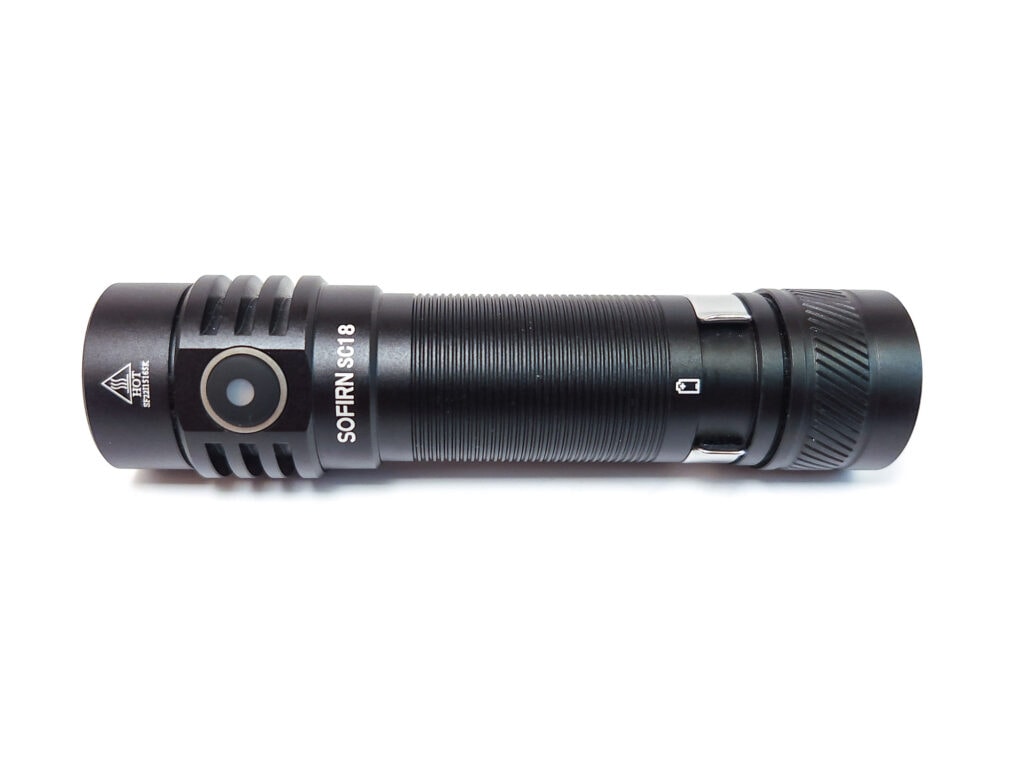
Sofirn SC18 specifications
| Brand & Model | Sofirn SC18 |
|---|---|
| Flashlight category | EDC |
| LED | Luminus SST-40 6000-6500K |
| Max. output | 1800 lumens |
| Max. beam distance | 217 meters |
| Max. beam intensity | 11,750 cd |
| Battery config. | 1*18650 |
| Onboard charging | USB-C |
| Modes | Moonlight, Low, Medium, High, Turbo |
| Blinkies | Strobe |
| Waterproof | IPX8 |
| Review publication date | November 2022 |
Introduction:
Sofirn, well known for their budget lights, is going for the budget light with the SC18. Coming in as low as $15 for an 18650-sized light (only $17 with a battery!), this is one of the lowest priced full-size lights available, and it includes integrated USB-C charging! It almost sounds too good to be true… So what’s budget about the SC18 and what’s quality? Read on to find out!
Package quality.
The SC18 comes in Sofirn’s standard box. There are some generic flashlight graphics and contact information on it, and the only indication of what model is inside is on the barcode sticker on the back. Inside the box you’ll find:
- Sofirn SC18 with clip and Sofirn-branded 18650 inside
- Two spare o-rings
- Manual
- Lanyard
- USB A to C cable
There’s not much to it, but it is a budget light, after all.
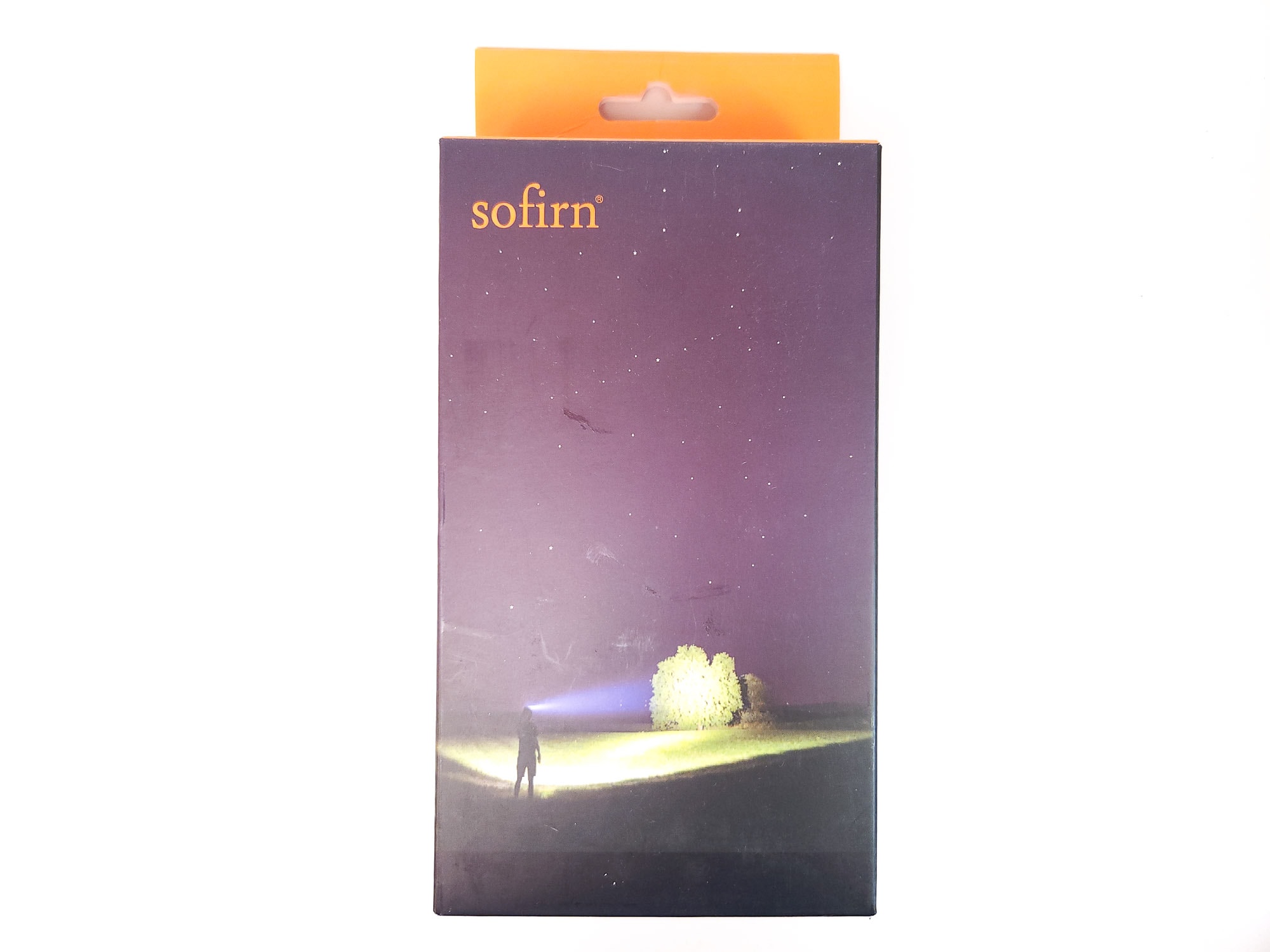
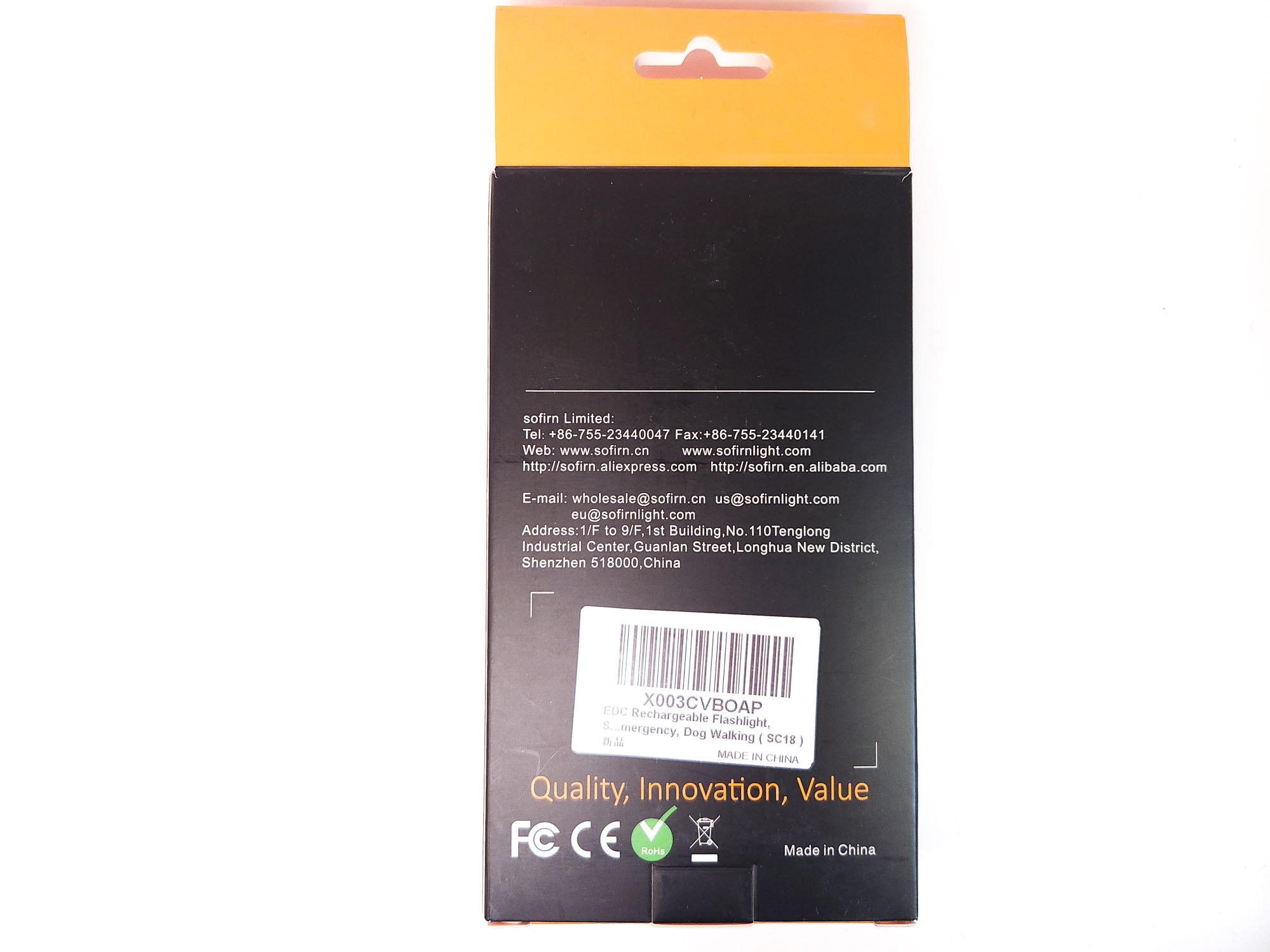
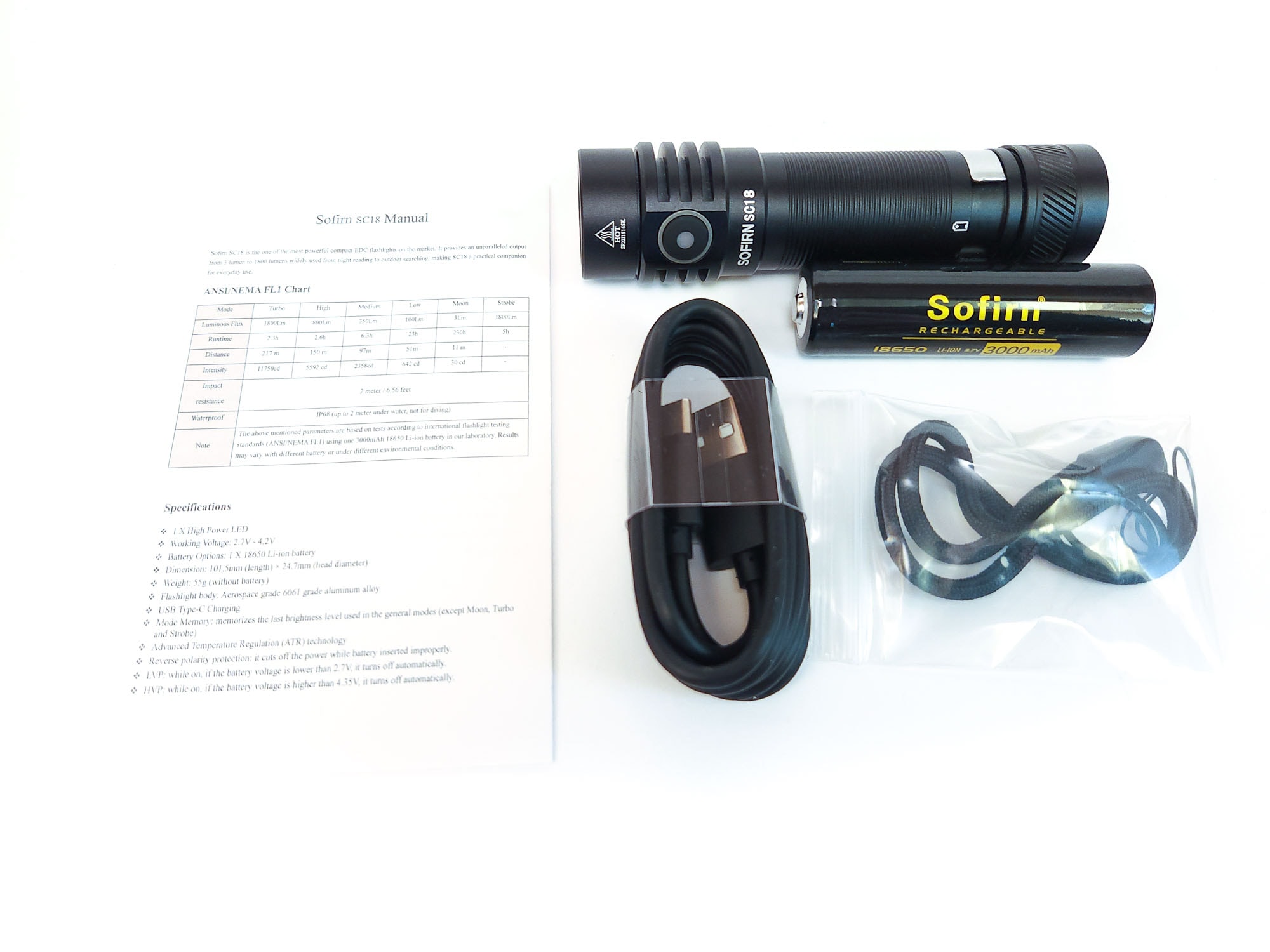
Flashlight in use
One thing I noticed about the SC18 is that it feels small. Sure it’s still 4 inches (102mm) long, but at that length there’s really only Lumintop’s FW series, Emisar’s D4V2, and Zebralights (along with a few assorted others) that are shorter than it. This makes it really pocketable and easy to carry around.
When you have the light in your hand, the SC18 can be a bit slippery. This is due to the horizontal-only knurling. It’s fine if you’re applying pressure parallel to the body of the light, but from side to side, there’s nothing for your hand to grip.
The clip that comes with the SC18 is a standard Sofirn clip which is not deep carry, so the tail will stick out of your pocket, but it’s not as much as if it had a tail switch. Unlike with some Sofirn lights, the clip is unpainted steel instead of black, so it does stand out against the otherwise black light.
There’s a small cutout on the tail through which you can thread the included lanyard. The problem with that, though, is that doing so will interfere with the light’s ability to tail stand. There’s nothing really special about the lanyard so unless you really like having a lanyard, I’d suggest leaving it off.
The SC18 has an electronic side switch with an indicator light under the switch boot that turns on for a few seconds when the light is turned on. The button is easy to use and the round shape helps distinguish it from the rubber USB charging port cover which is on the opposite side of the light. I also tend to set the clip on the rear of the light so that I have a physical frame of reference to help locate the button. The button, clip, and charging port all protrude some amount from the body of the light, so they’ll help prevent it from rolling.
There is some delay between when you click the button and when the light turns on. It’s just a fraction of a second while the light waits for additional clicks, but it’s there.
The light has electronic lockout, which you can access with 4 clicks from off, but one thing that’s not present on many budget lights is that while the light is locked out, you can still hold the button for momentary moonlight! I really like this feature and to find it on a budget light is a welcome addition!
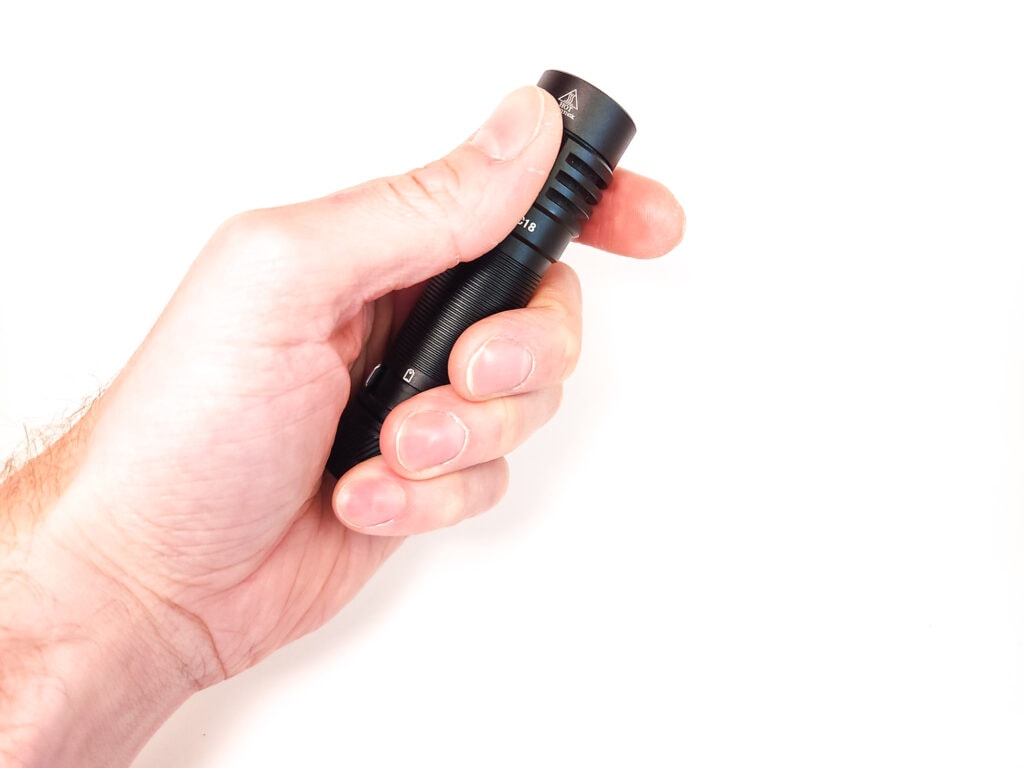

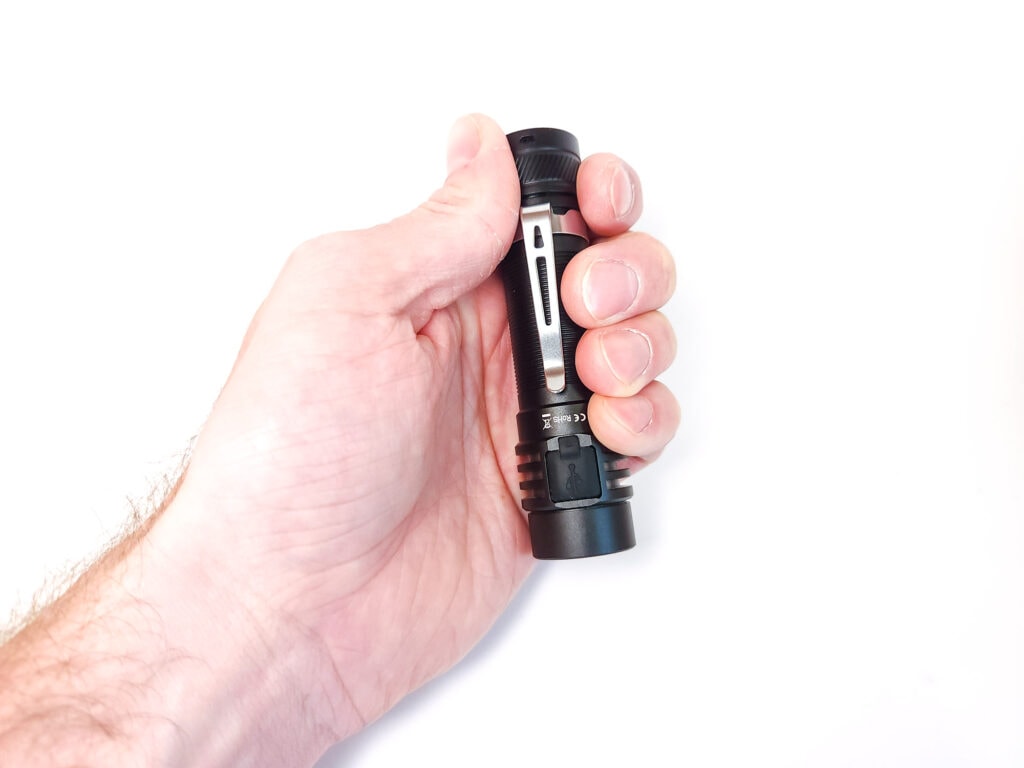
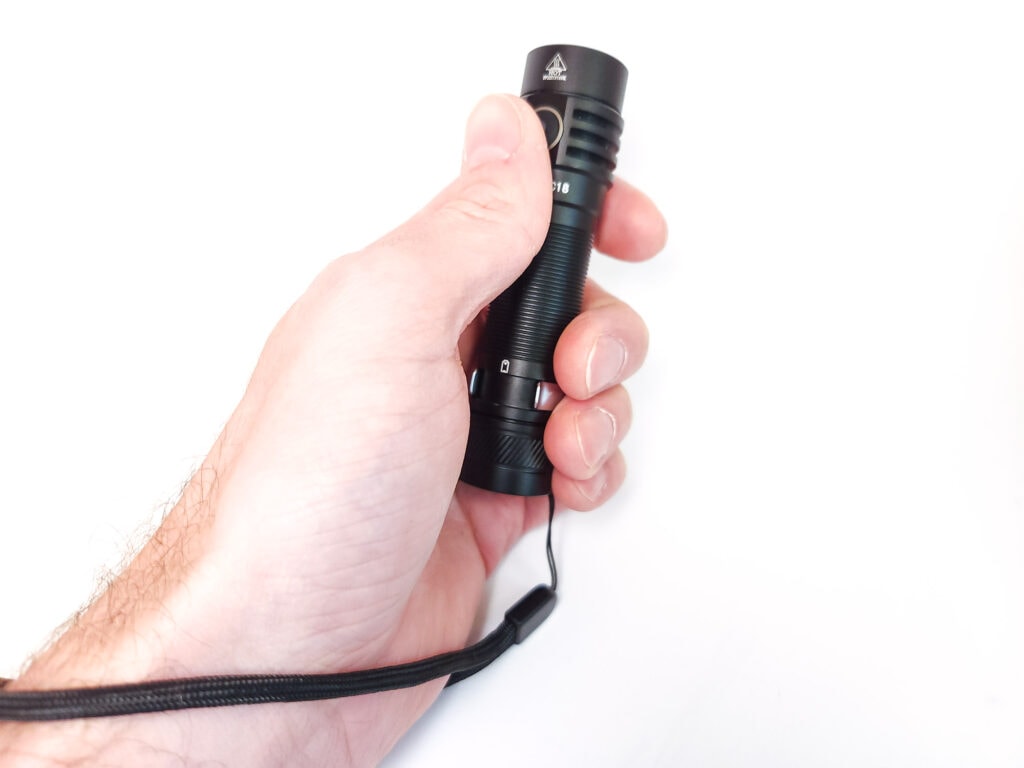
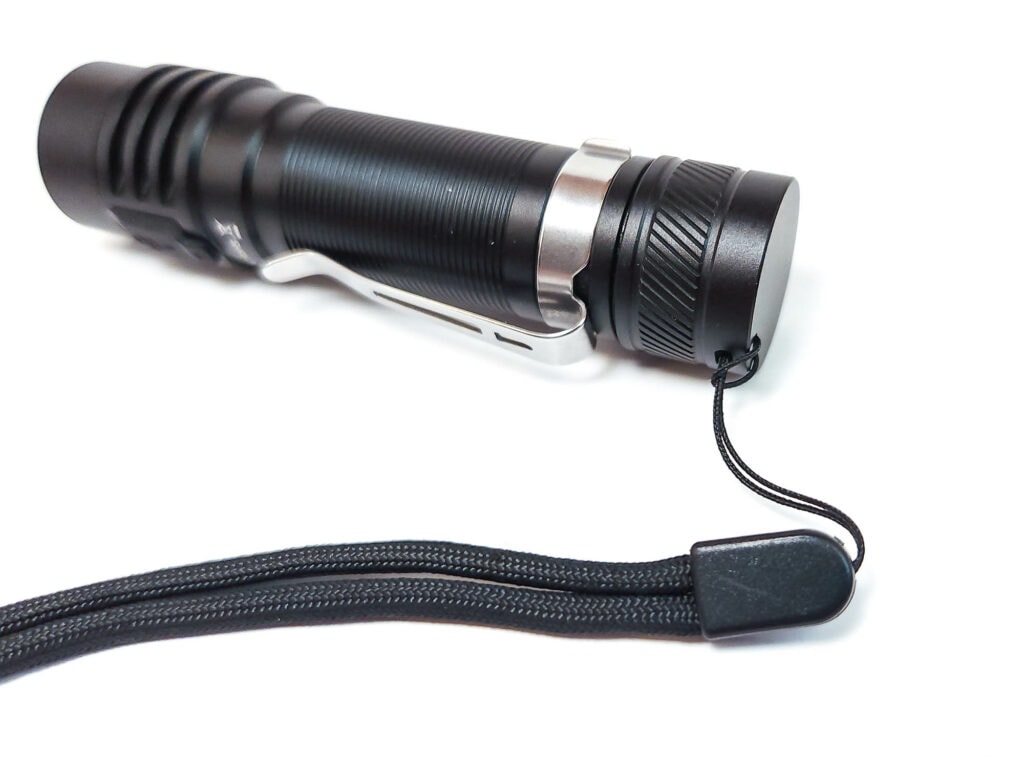
Build Quality, and Warranty
Like all of Sofirn’s offerings, the SC18 is all aluminum, with black anodization. Unlike many lights, though, the SC18 has a unibody construction; the head is integrated into the body. The bezel and tailcap are what gets removed to access the internals and battery.
The “head” section has deep cooling fins cut into the side, with the circular button at the front, above the Sorfirn name and model. On the reverse is the USB charging port and some regulatory markings. There is a tiny lip right where the tab on the USB charging port cover lays, so if you run your fingernail along the surface of the light to try and get it under that tab, you’ll hit that lip and it can make it challenging to grasp, but once you do, the cover lifts up easily.
As mentioned above, the body only has rings cut around it as the knurling. They’re cut fine, but unfortunately if you set your fingers on the sides of the light, the lack of parallel knurling makes it easy for the light to slide out of your hand. There’s a small battery icon etched into the bottom of the tube that lines up with the Sofirn SC18 text indicating that you insert the battery positive side first. I’d prefer to have that on the back of the light, as it’s a bit of an eyesore.
The threads on the tail are very smooth and the only ones I could access, as the bezel is glued down. They’re also anodized, so a quick turn of the tail cap will disconnect the battery for mechanical lockout.
There’s an optional magnetic tailcap, but I do not have one to test.
Interestingly, if you angle it just right, you can see the printing on the MCPCB through the TIR. It reads:
WK03LEDA0
20220517
This is because the SC18 is also sold by Wurkkos, Sofirn’s sister company, as the WK03. (Or is it that the Wurkkos WK03 is sold by Sofirn as the SC18?) Either way, they’re the same light, and the second line is likely the production date. That by itself doesn’t make the light feel cheap, as the TIR is directly over the MCPCB. But one thing that does make it feel like a budget light is that you can also see the indicator light from the button through not only the TIR, but the charging port and the tube of the light as well. It seems like there’s a lot of space inside the head and/or the components are not tight which can affect the way heat is transferred away from the driver and limit the performance of the light.
Sofirn’s standard warranty applies to the SC18:
Within 30 days of purchase: Contact the original seller for repair or replacement.
Flashlights: Within 1 year of purchase: Contact Sofirn for repair or replacement.
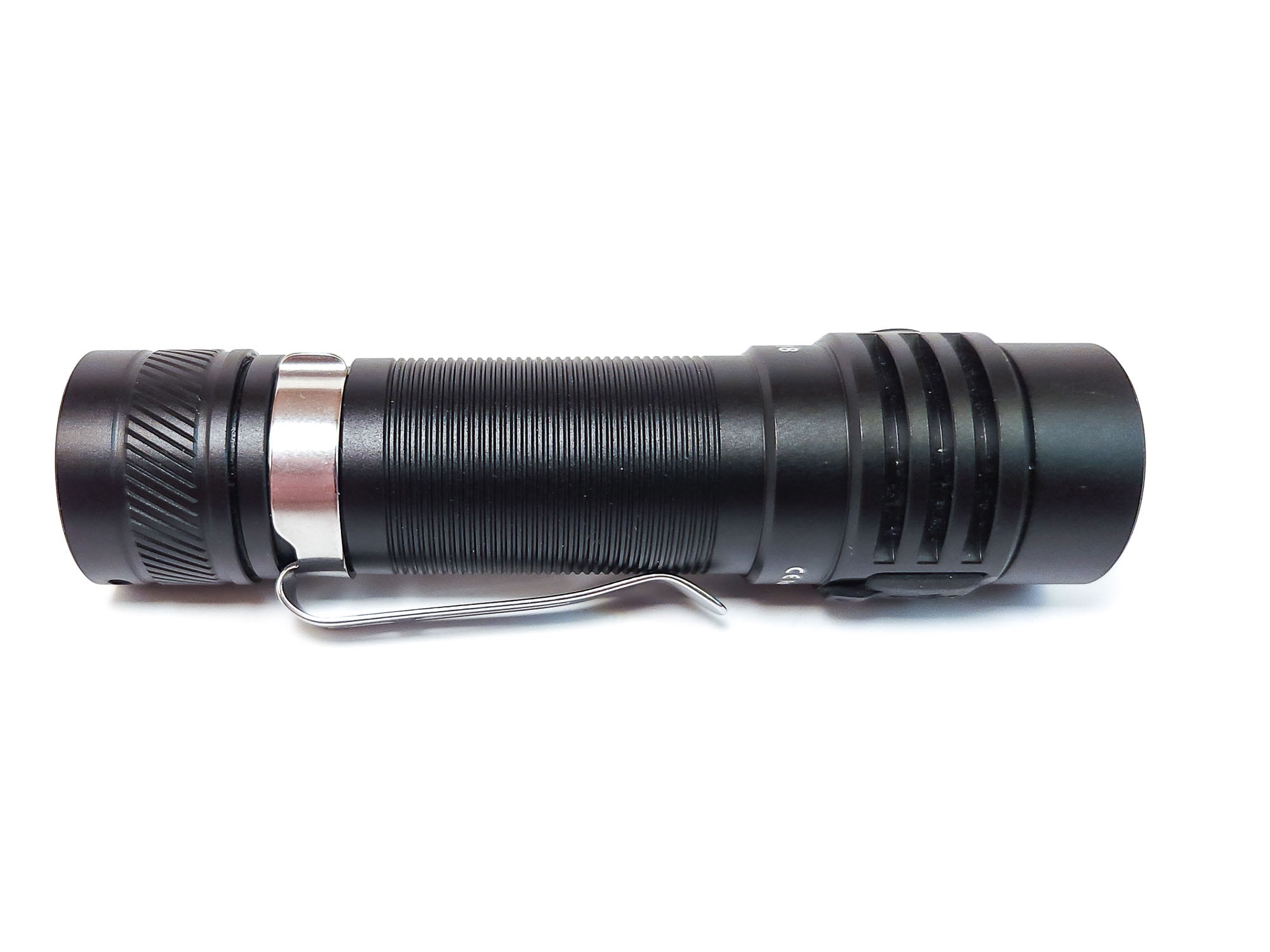
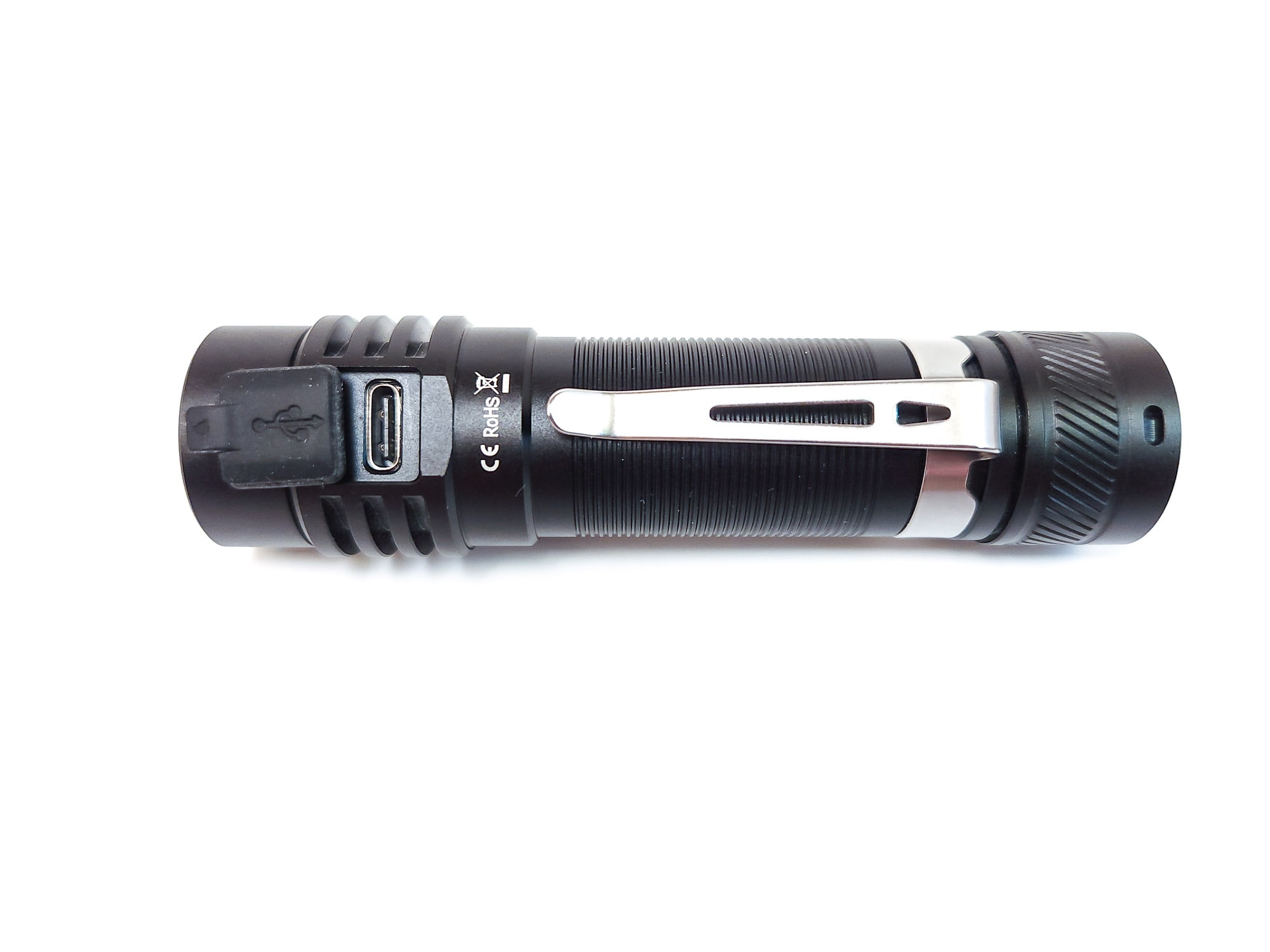
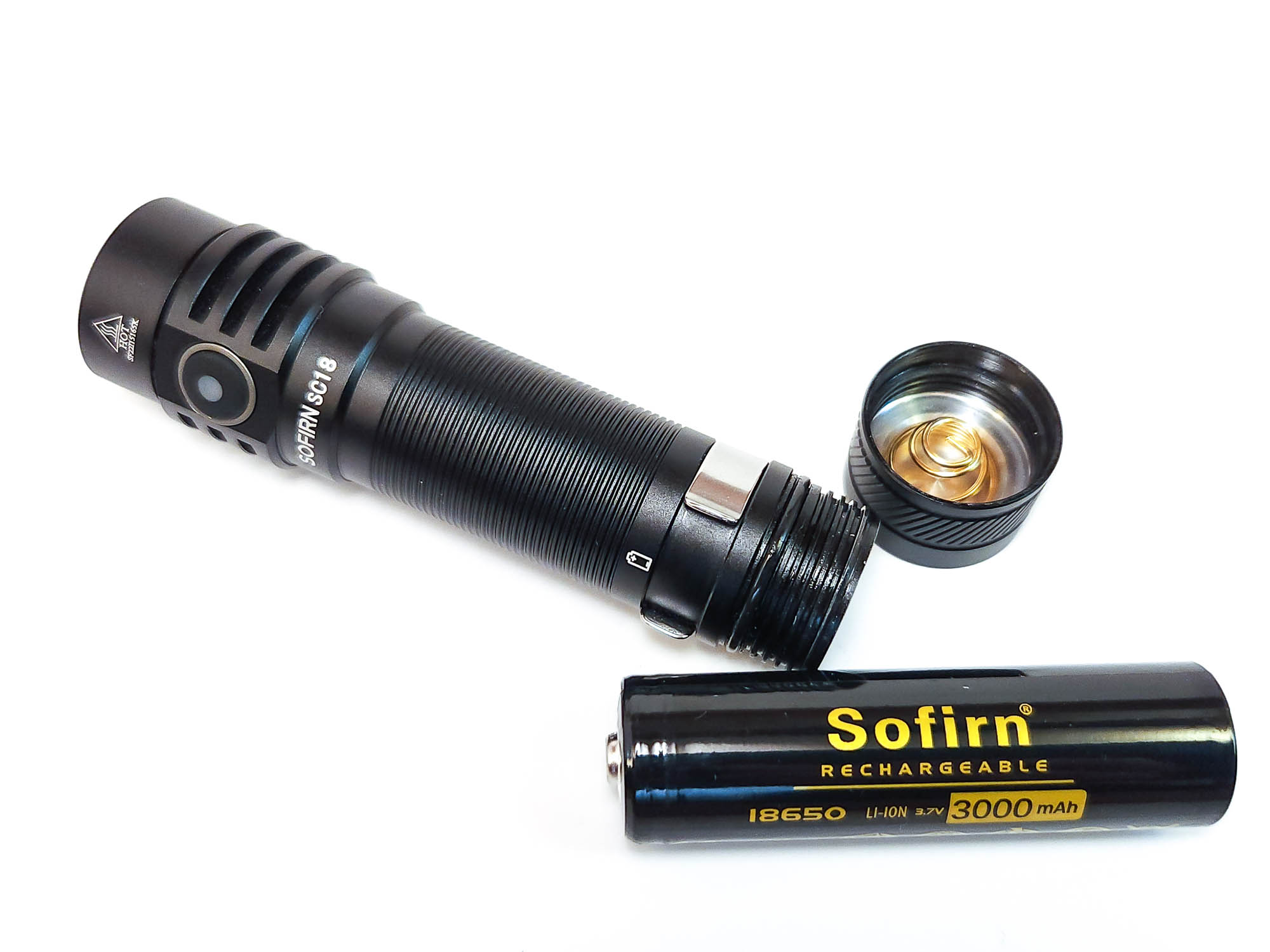
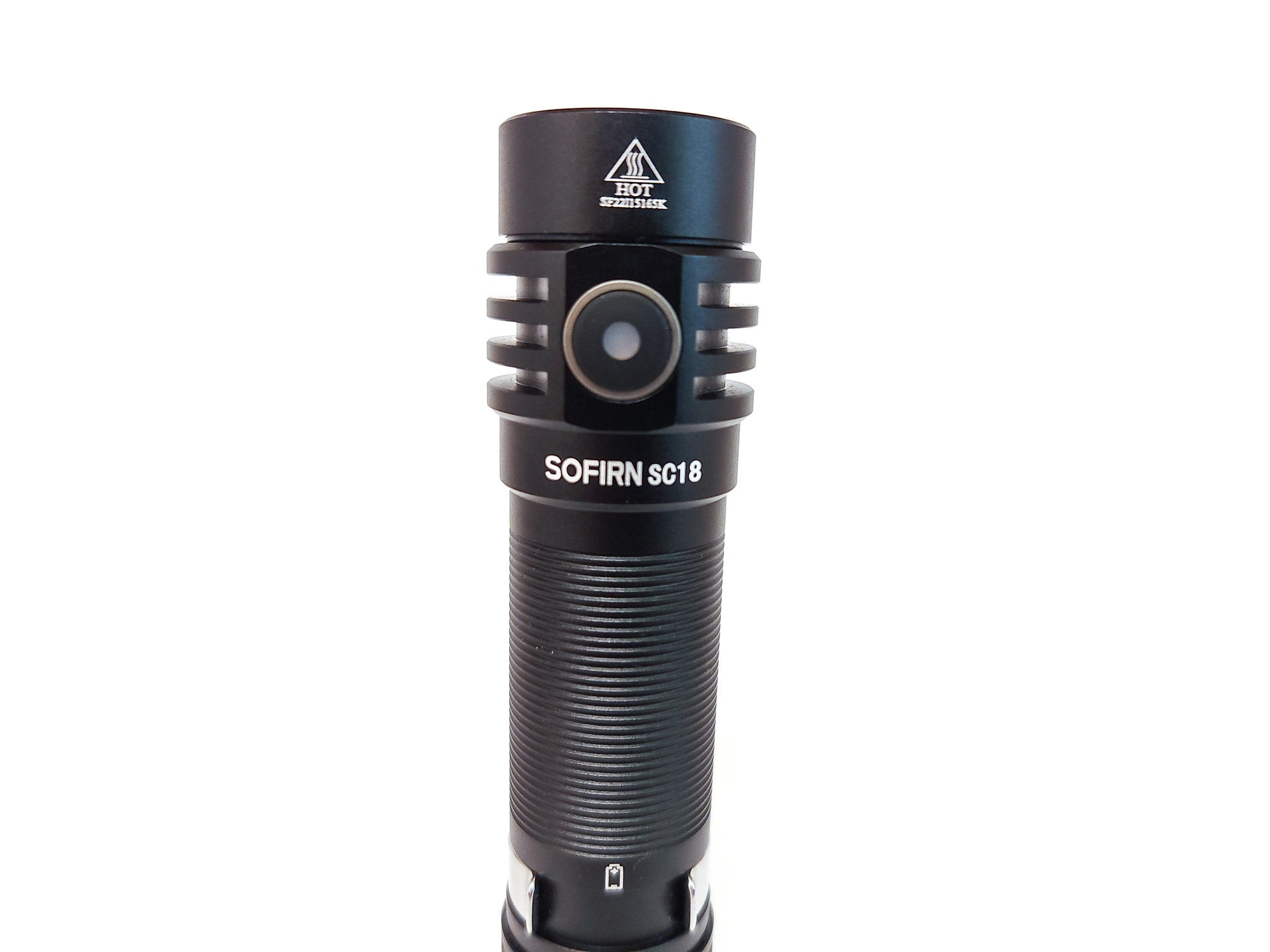
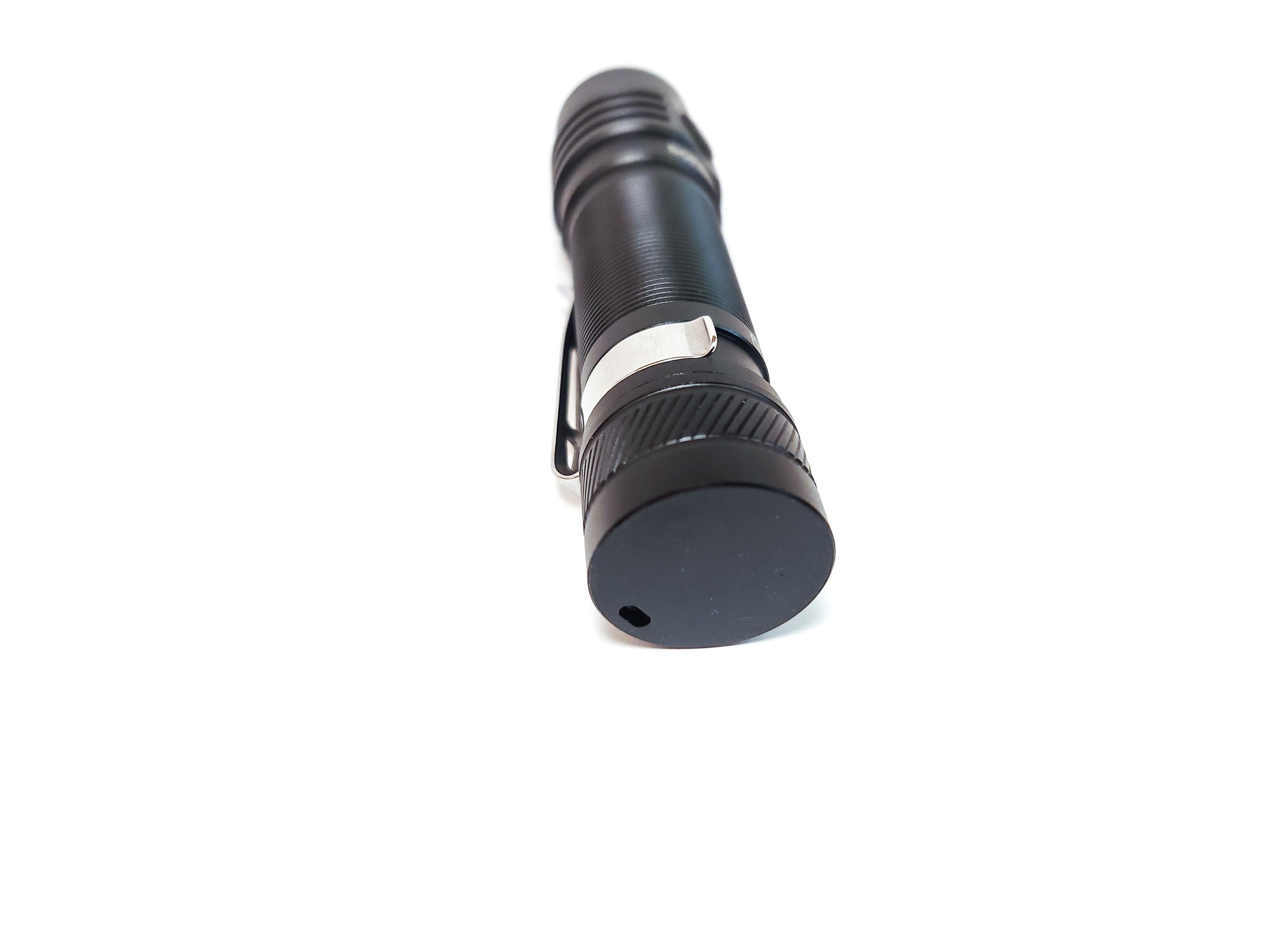
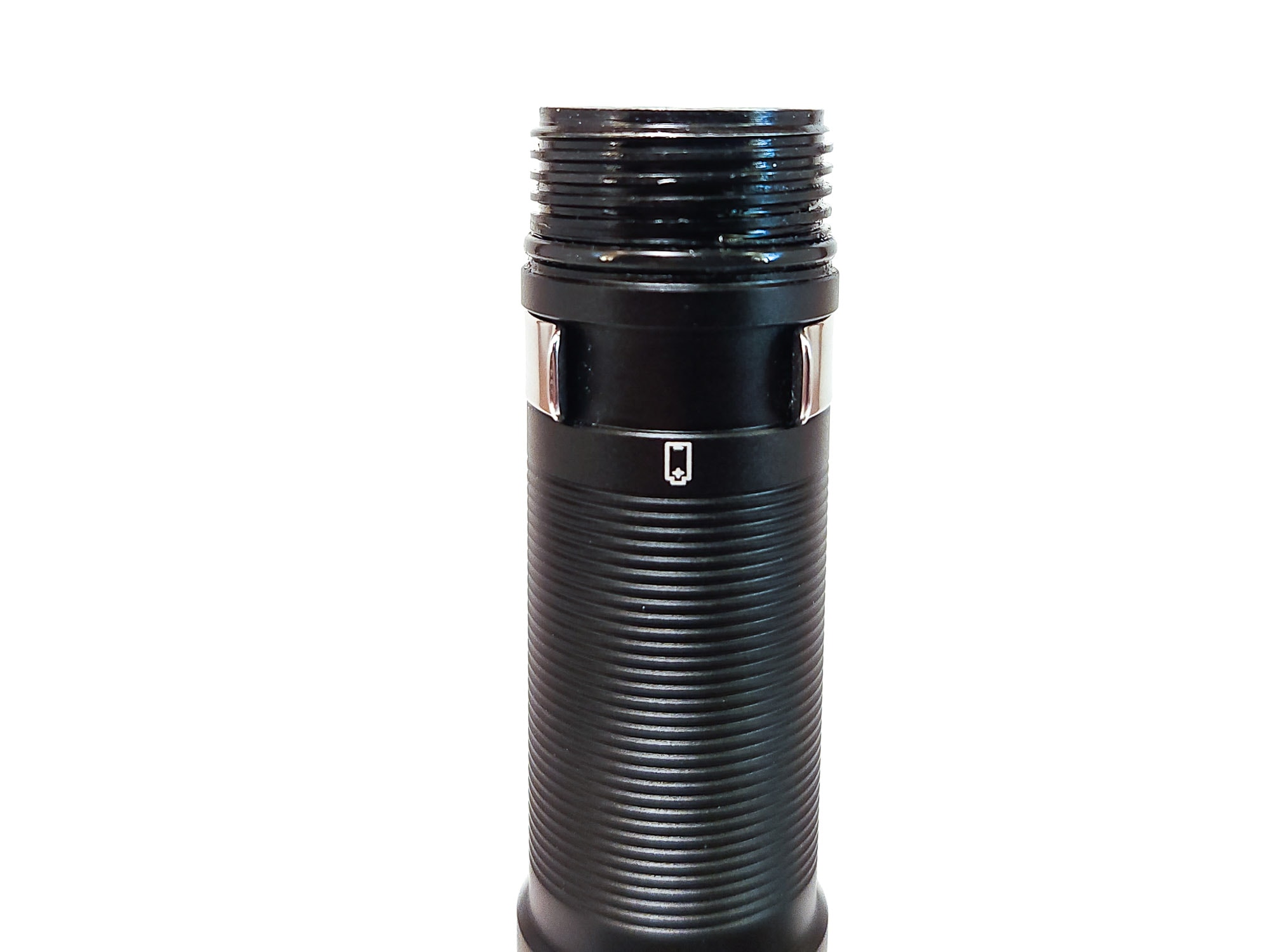
LED, Lens, Bezel, Beam, and Reflector
The SC18 uses a Luminus SST-40 that Sofirn states is 6000K-6500K, though my Opple Light Master Pro measured it from 5800K-6200K, depending on the mode. The SST-40 is low CRI by nature. The light is focused by a narrow TIR lens that’s exposed with no glass lens to cover it. This could result in scratches if the light is tossed into a bag or something with other edged objects, so you’ll have to be a little careful with that.
The product page on Amazon claims that the SST-40 is domeless, which I do not believe is true. The SST-40 is a domed emitter and there is no factory domeless option, so for Sofirn to dedome it just for this budget light would be extra work and cost, which doesn’t add up.
The TIR actually does a decent job of handling the SST-40’s green-leaning beam; the hotspot is pretty white, though the spill has green and blue rings. If you compare it to another light with a rosier tint, the green will show more, but on its own, it’s not bad. My Opple measurements corroborate that with above BBL measurements and positive DUV. Sofirn keeps all of this in place with a plain bezel that’s glued down.
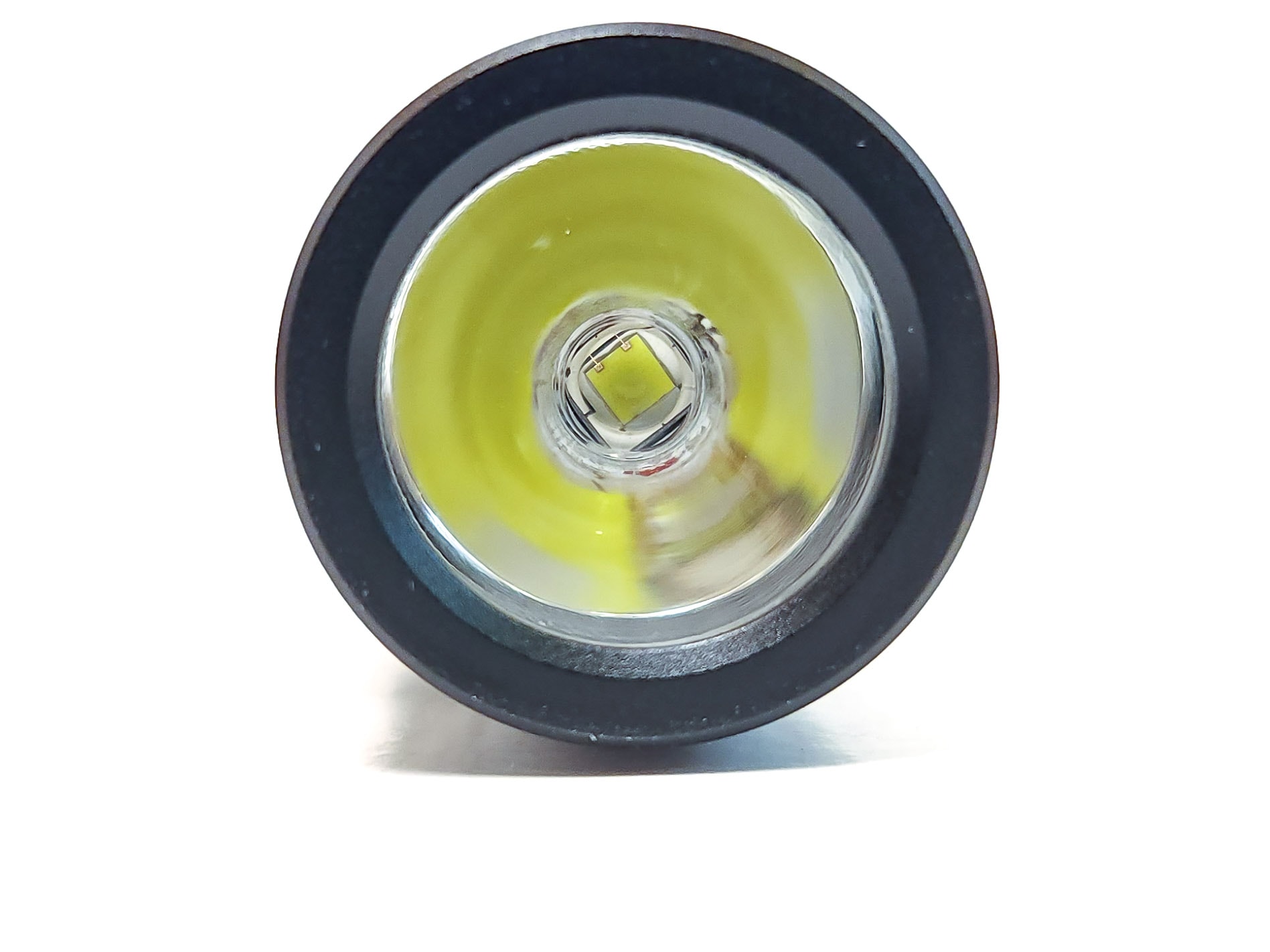
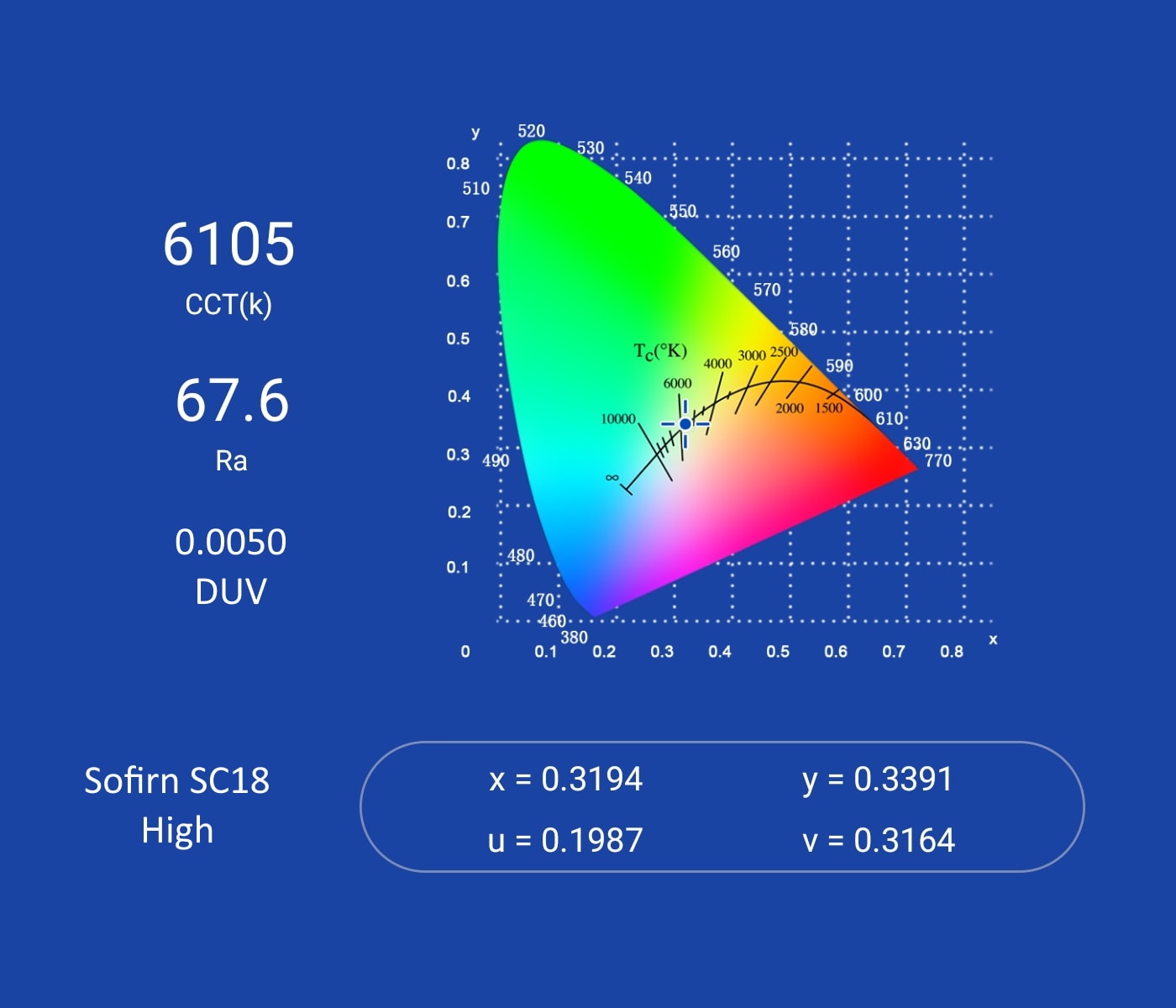
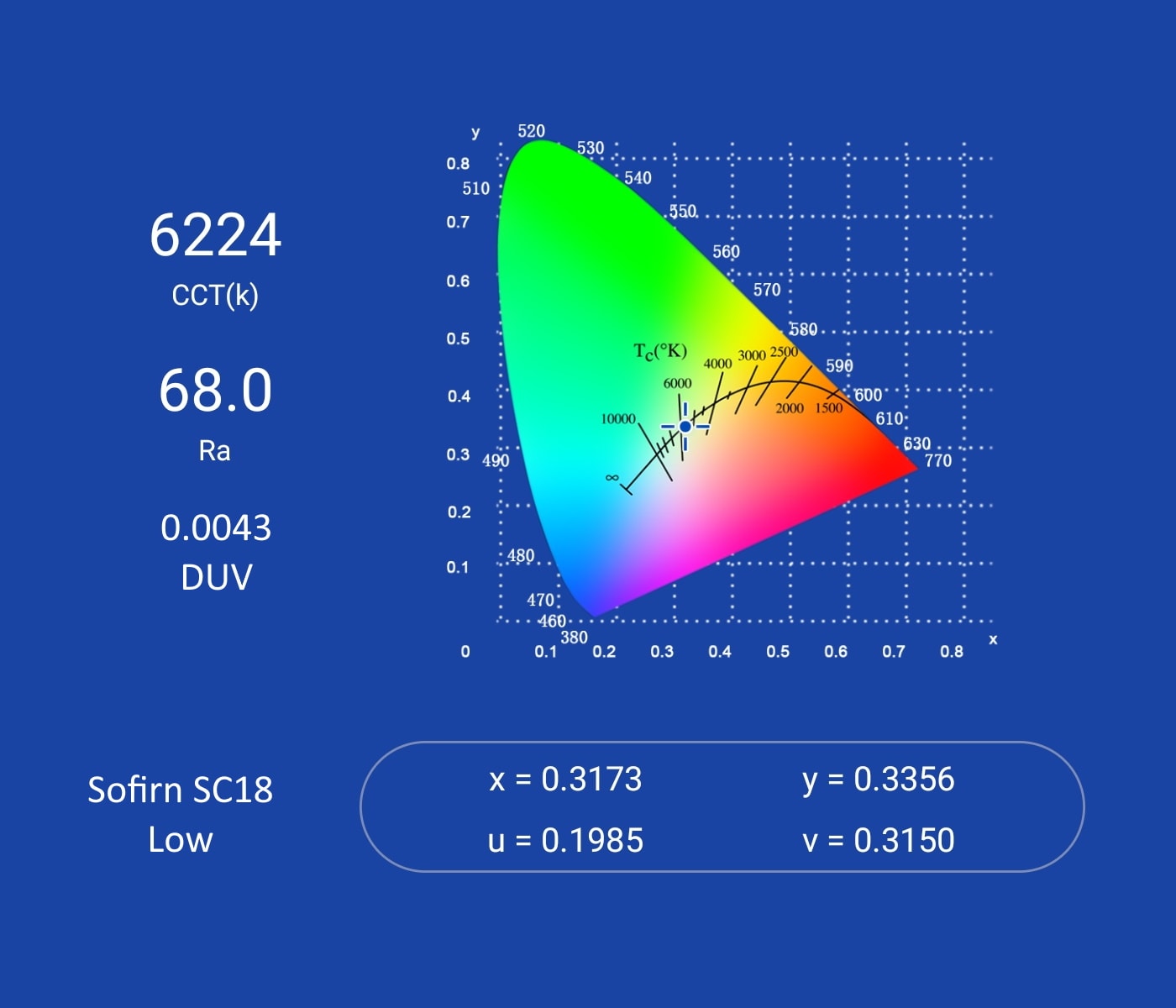
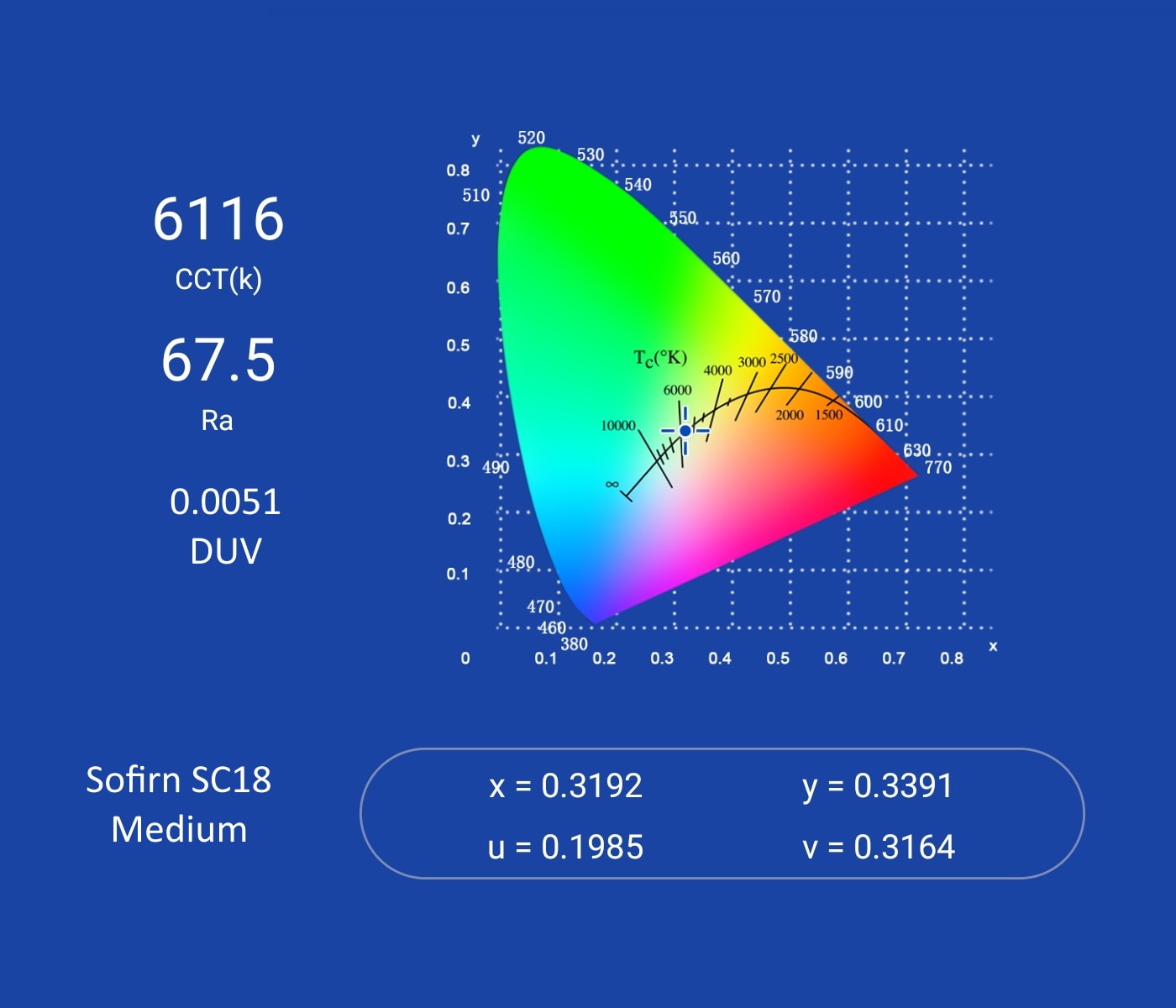
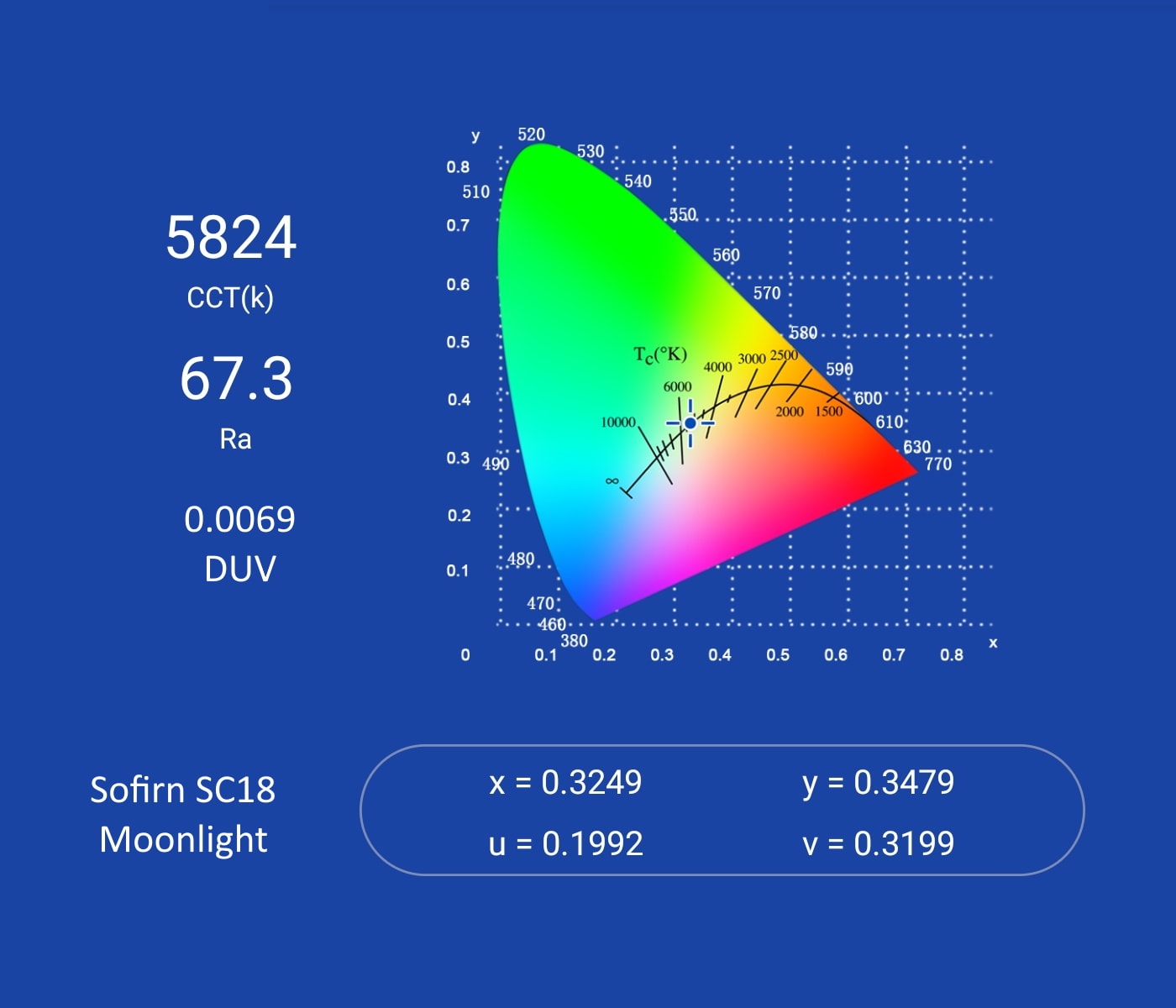
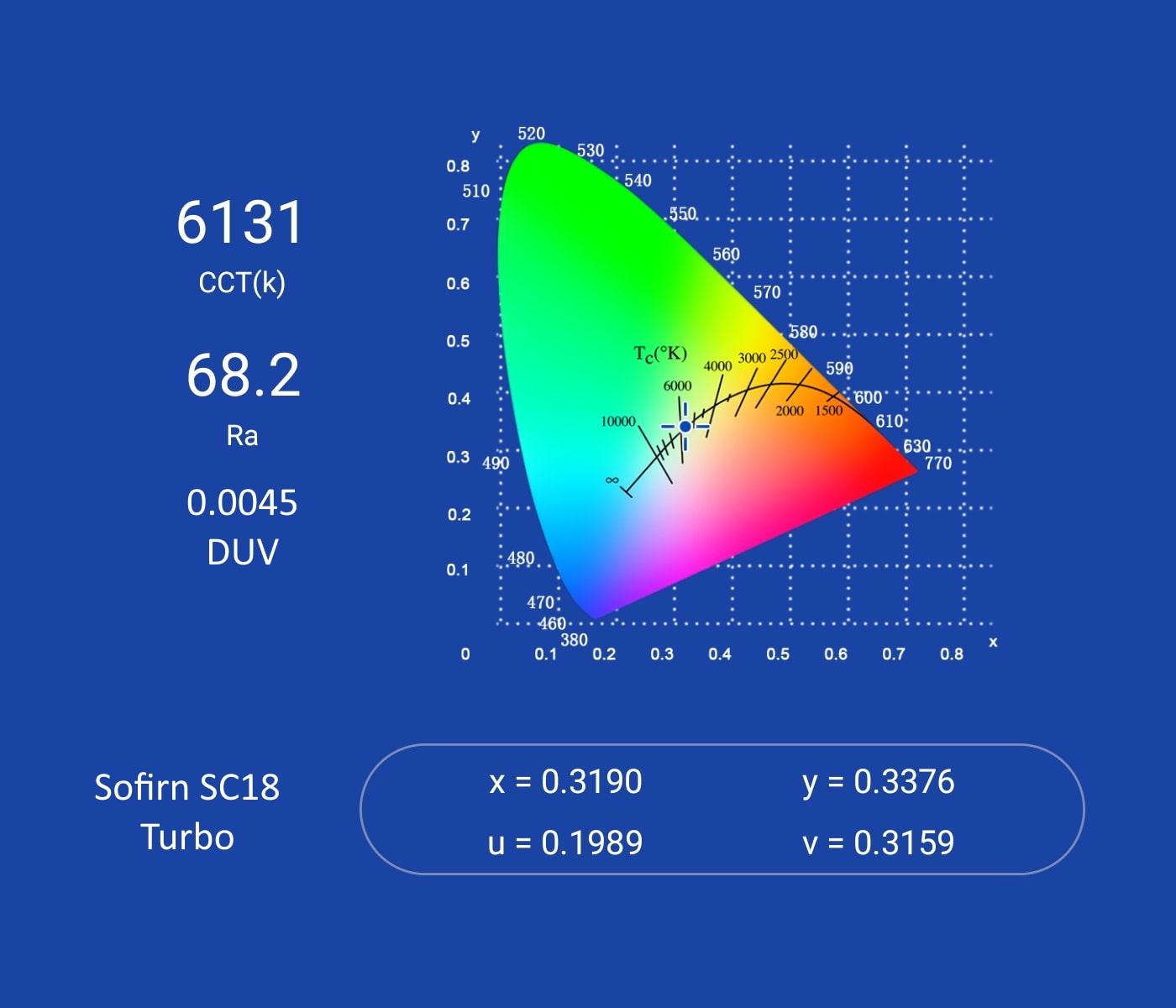

Dimensions and size comparison
Dimensions:
| Dimension | Millimeters | Inches |
|---|---|---|
| Length | 102 mm | 4.0 in |
| Head diameter | 27 mm | 1.1 in |
| Body diameter | 23 mm | 0.9 in |
Dimensions are rounded to the nearest millimeter, and to the nearest tenth of an Inch.
Weight:
| Weight | Grams | Oz. |
|---|---|---|
| Without battery: | 54 g | 1.9 oz |
| With battery | 98 g | 3.5 oz |
Weight is rounded to the nearest gram, and to the nearest tenth of an Oz.
Flashlight size comparison with its competition
This is a pretty small light! As you can see from the pictures, it’s only a little taller than the Emisar D4V2 and Zebralight SC64 series, which are some of the smallest lights out there. Compared to Convoys, it comes in between the S2+ and T2, which is a 14500 light.
Group 1: Emisar D4V2, Sofirn SC18, Zebralight SC64c LE
Group 2: Convoy S2+, Sofirn SC18, Convoy T2
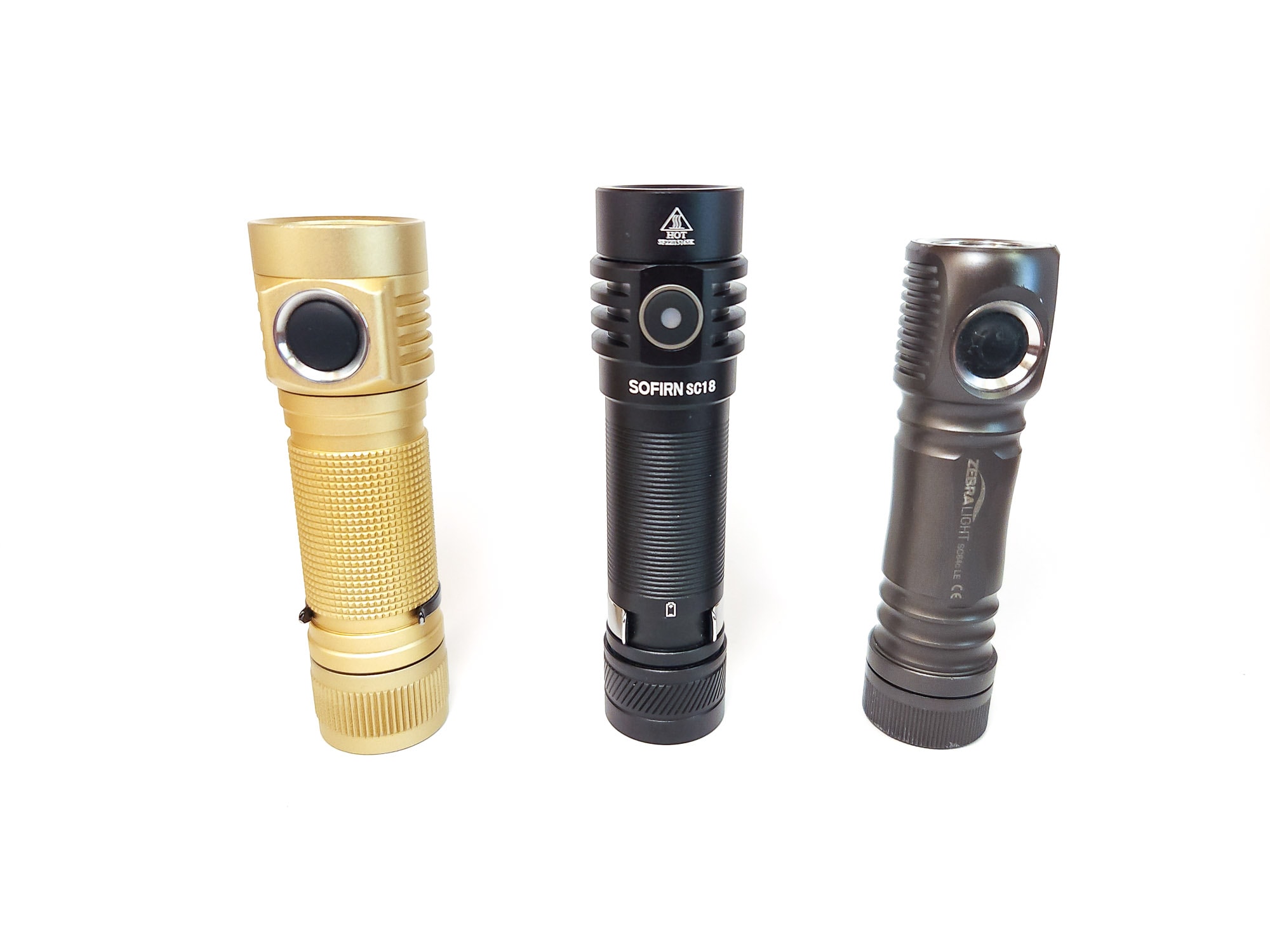
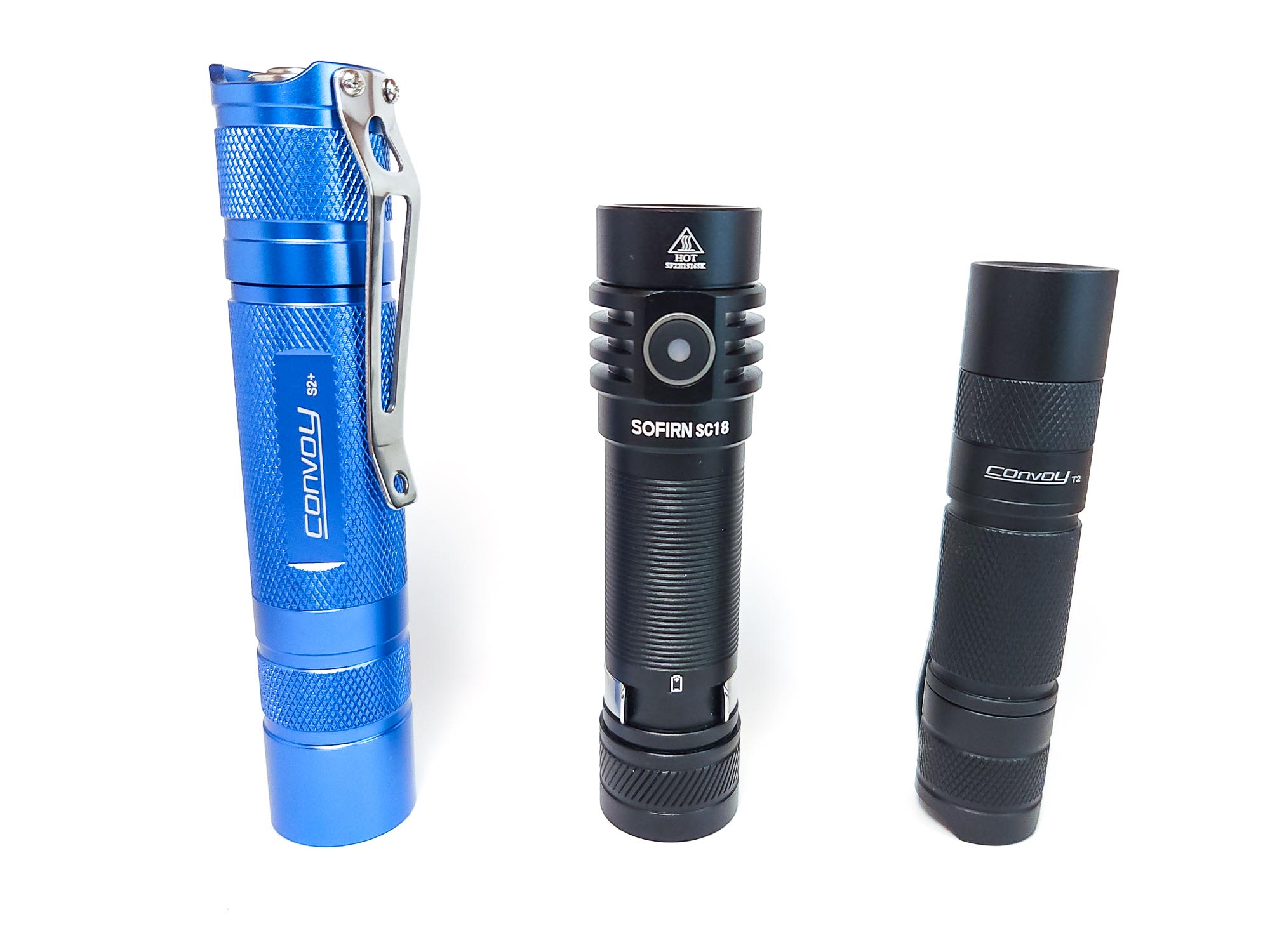
Driver & User Interface:
Available modes: Moonlight, Low, Medium, High, Turbo
Available blinky modes: Strobe
User interface:
From OFF:
- Press and Hold: Moonlight
- Single click: On to memorized LMH
- Double click: Turbo
- 3 clicks: Strobe
- 4 clicks: Lockout
From ON:
- Press and Hold: Advance mode (You can advance out of moonlight and turbo to LMH, but not into moonlight or turbo.)
- 1 click: Off
- Double click: Turbo
- 3 clicks: Strobe
Mode memory:
- The SC18 will memorize LMH
Shortcuts:
- To Moonlight: Hold from off
- To Turbo: Double click from any mode except strobe
- To Strobe: Triple click from any mode
Low voltage warning:
- The indicator light in the button will turn red when voltage gets low
Strobe/blinkies
- Th SC18 only has one strobe, which you can get to with a triple click from any mode
Lock-out mode:
- 4 clicks from off will lock the light out. If you click the button while it’s locked out, the SC18 will blink twice to let you know it’s locked out, though you can hold the button for momentary moonlight while it’s locked. 4 clicks while locked will unlock to moonlight.
PWM
- PWM is not visible on the SC18.
Additional info on the UI:
- It’s a simple UI, but it covers all the bases. I really like that it includes momentary moonlight while in lockout!
- If you’re in turbo or strobe, one click will not turn the light off; instead, it returns to the memorized LMH mode.
Batteries & Charging
Sofirn included onboard USB C charging in the SC18 and it optionally comes with a protected Sofirn button top battery. They advertise a one hour charge time with a 5A charger, though I measured it to be about two hours and fifteen minutes with the included USB A to C cable, which still isn’t bad for 3000mAh. I used a few different sources while charging, but the highest rated USB charger is 3A, so it’s possible it could be faster.
Sofirn’s self-branded 3000mAh battery measured 2958mAh when I did a capacity test with my Vapcell S4+ at 250mA. That’s pretty on the money!
Since there are springs at both ends of the tube, the SC18 can accept regular flat top batteries and even longer 18650s which have integrated charging in them as well.
The SC18 can be used while charging, or without the battery and only a USB cable plugged in, but only on low.
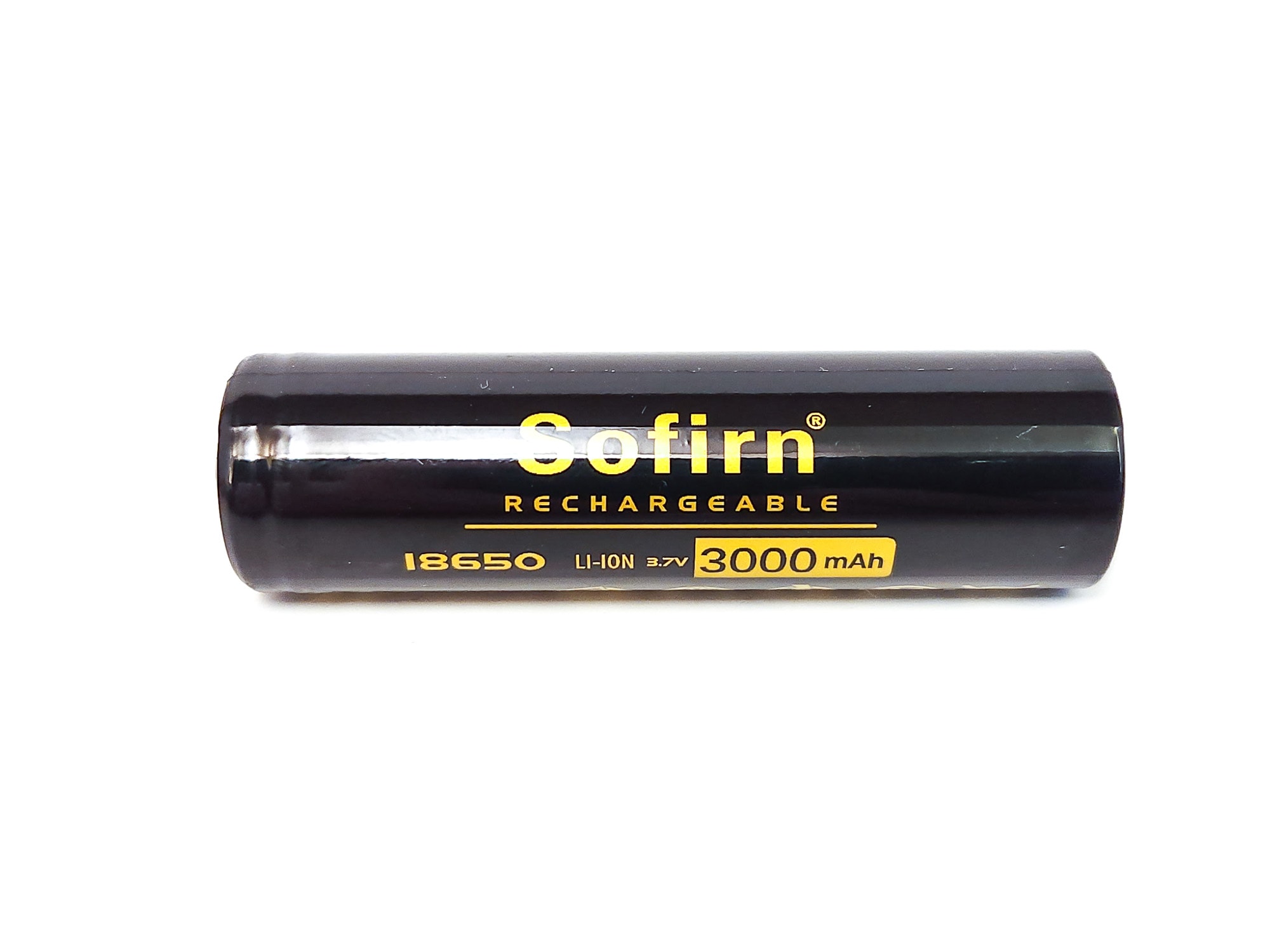
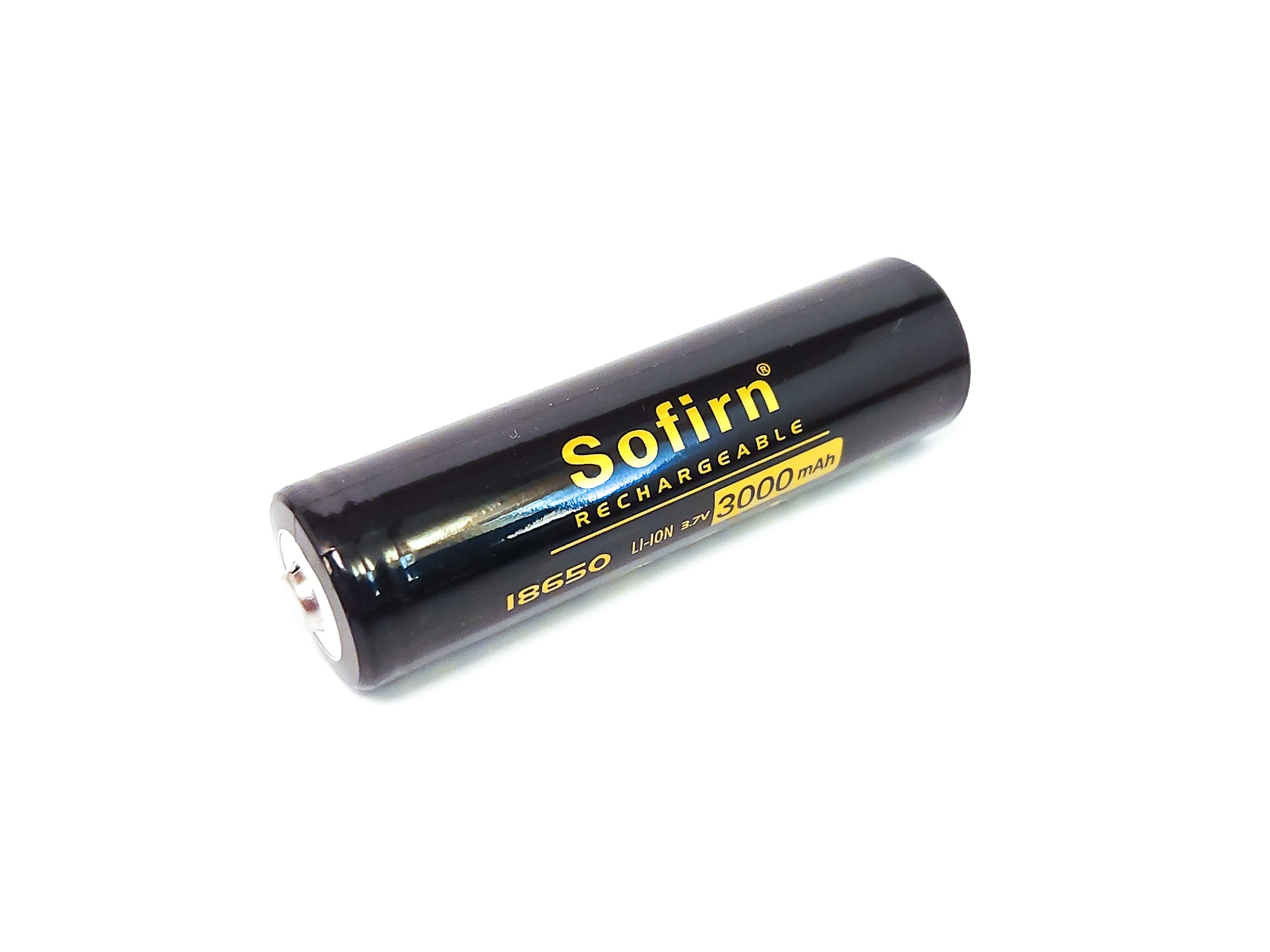
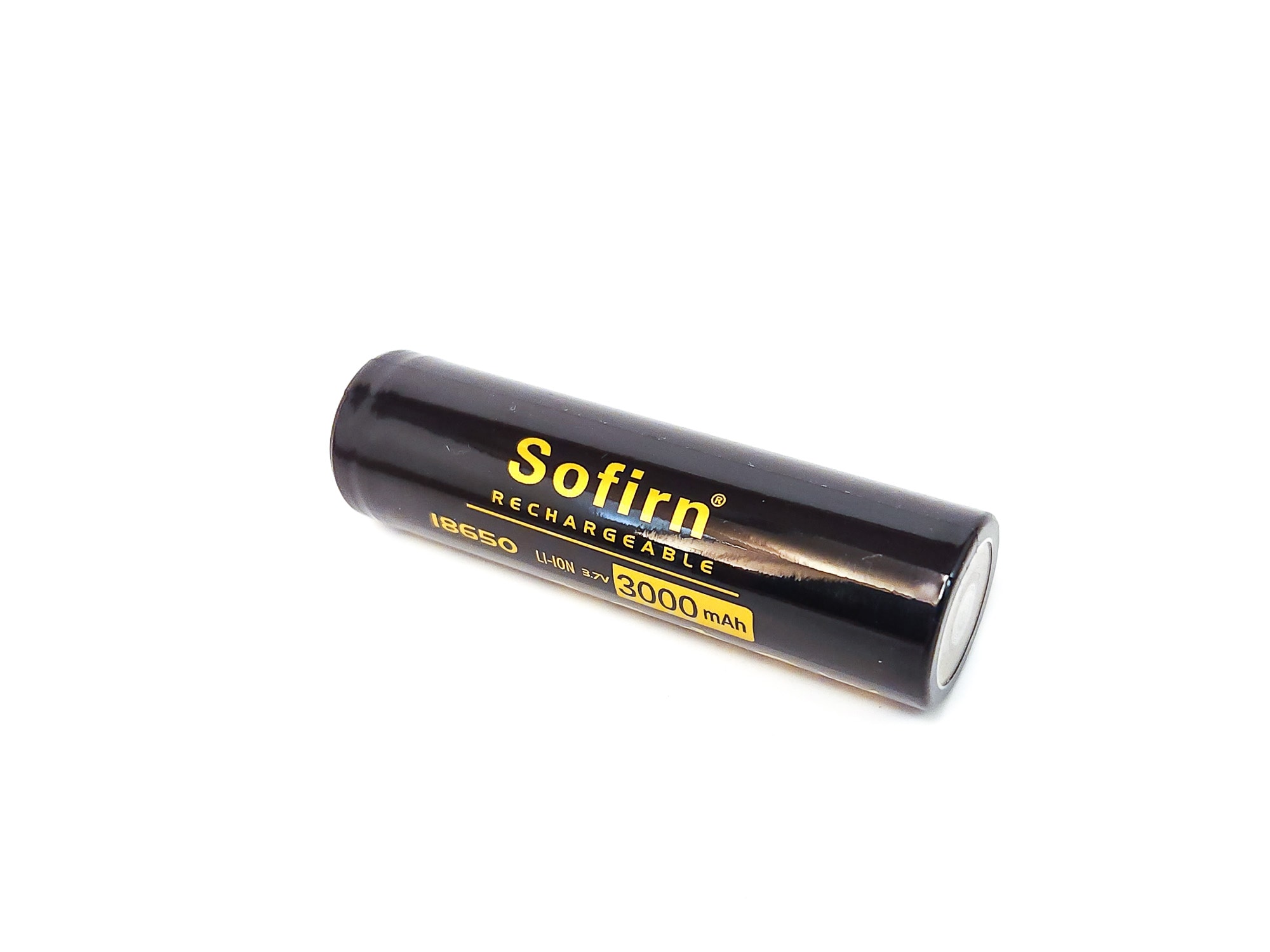
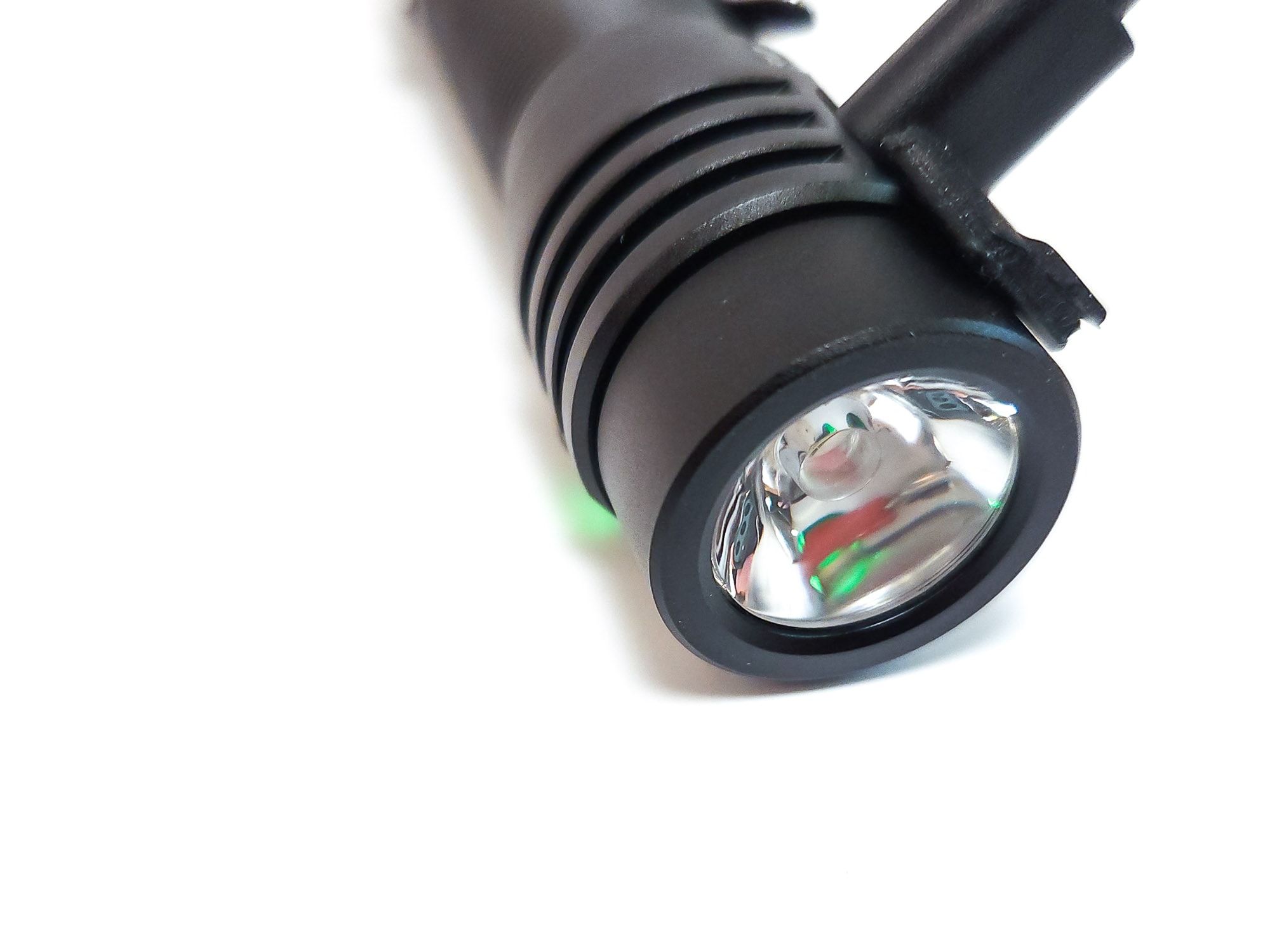
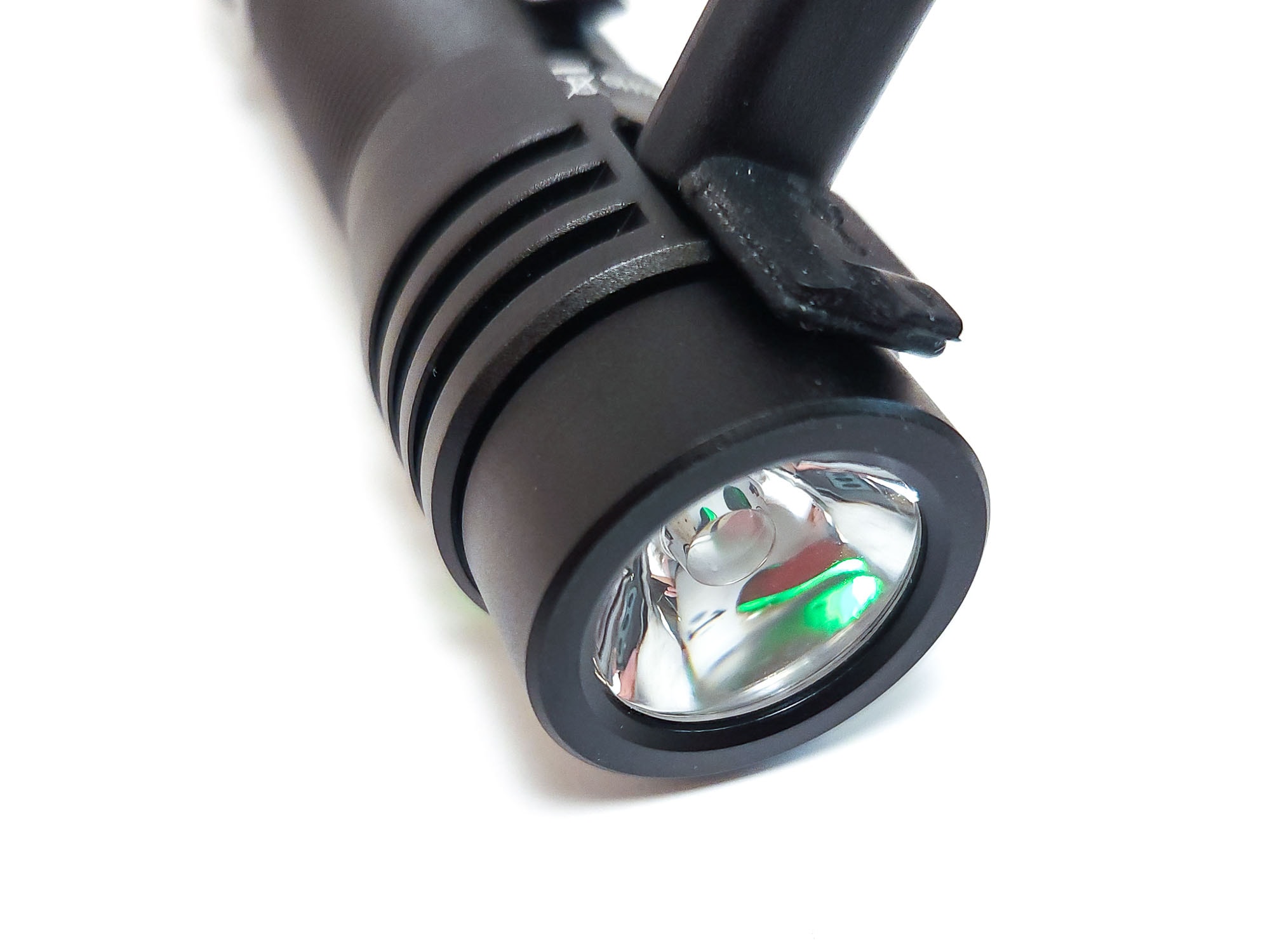
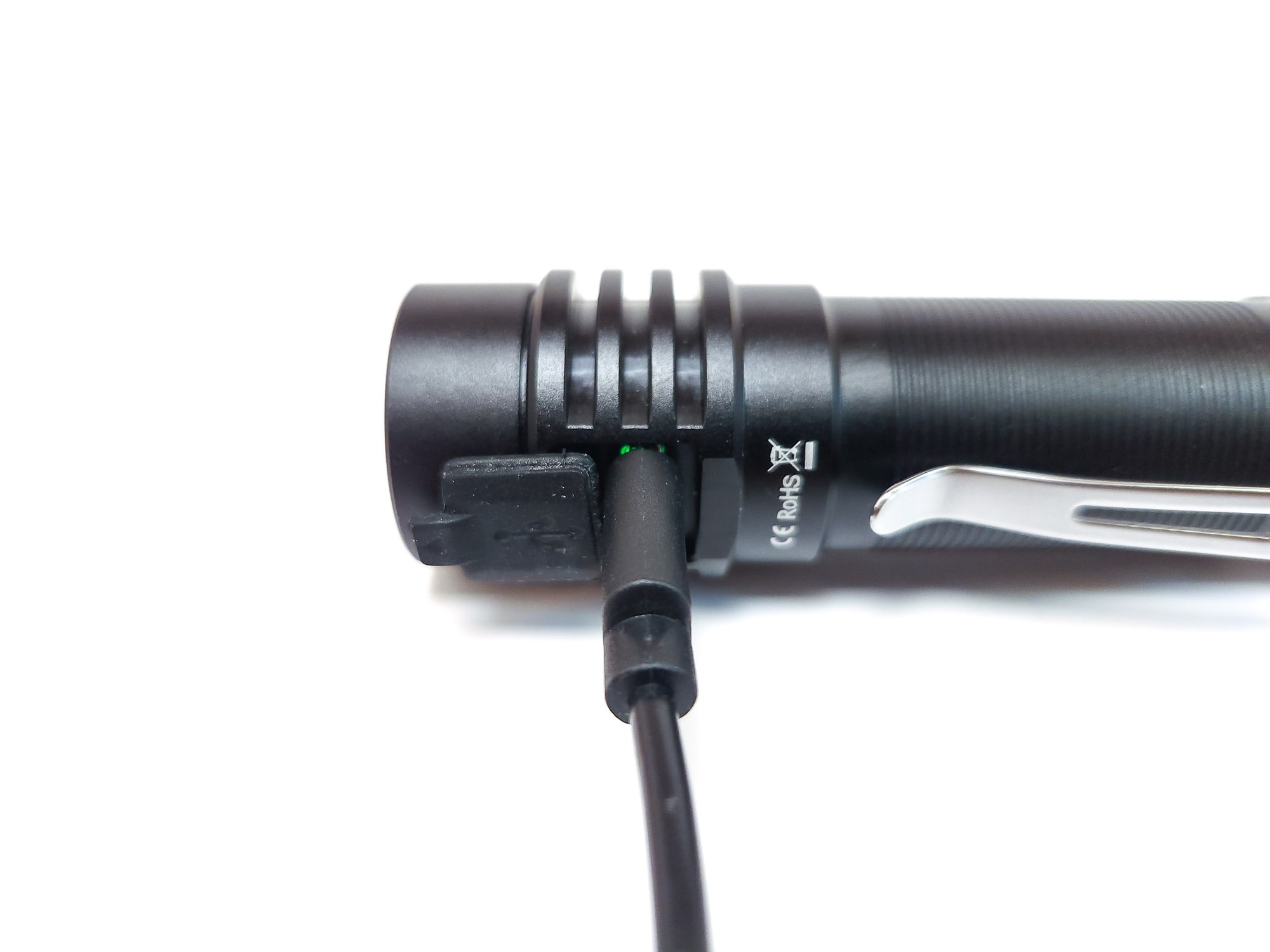
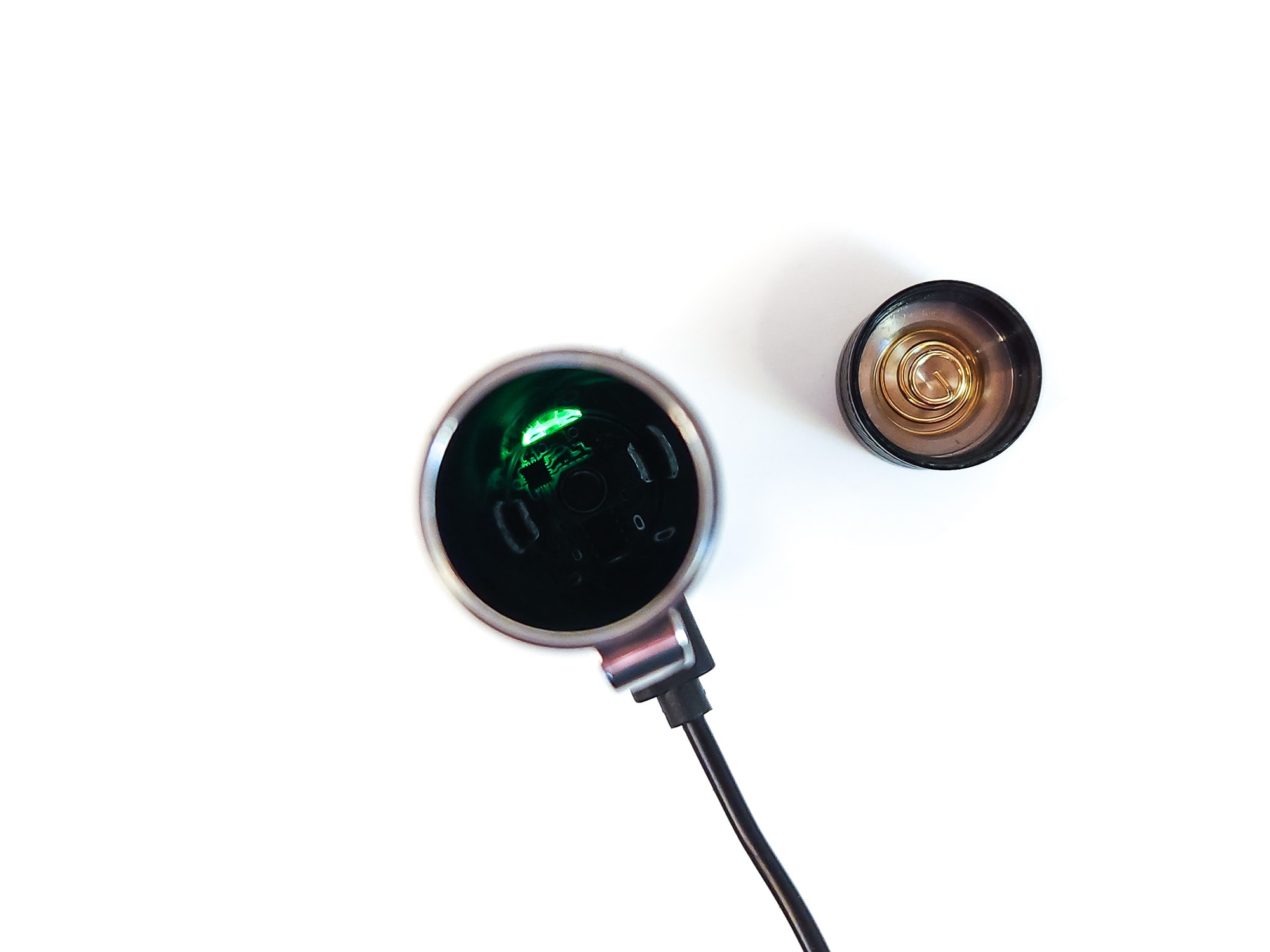
Performance test
Lumen measurements
To obtain these numbers, I used a very rudimentary integrated shoebox and ceilingbounce on my Samsung Galaxy S10. Ceilingbounce has been calibrated using a standardized calibration light provided by 1Lumen.
Sofirn overstated the output specifications of the SC18; my measurements were only 66-75% of what it was claimed to be able to do.
| Mode | Amps at start | Specified | turn on | 30 sec | 10 minutes |
|---|---|---|---|---|---|
| Moon | 0.00 | 3 | 1 lm | 1 lm | 1 |
| Low | 0.20 | 100 | 66 lm | 65 lm | 64 lm |
| Medium | 0.54 | 350 | 259 lm | 256 lm | 247 lm |
| High | 1.12 | 800 | 606 lm | 581 lm | 539 lm |
| Turbo | 2.75 | 1800 | 1216 lm | 1159 lm | 525 lm |
Parasitic drain:
- No parasitic drain was measured.
Amps were measured with a Klein Tools MM300 digital multimeter to the best of my ability.
Battery Life: Runtime graphs
A little bit of a mixed bag here. Low and medium don’t quite make their claimed runtime, and high and turbo almost seemed to have swapped numbers. I appreciate that high and turbo come very close to their specified runtime, though.
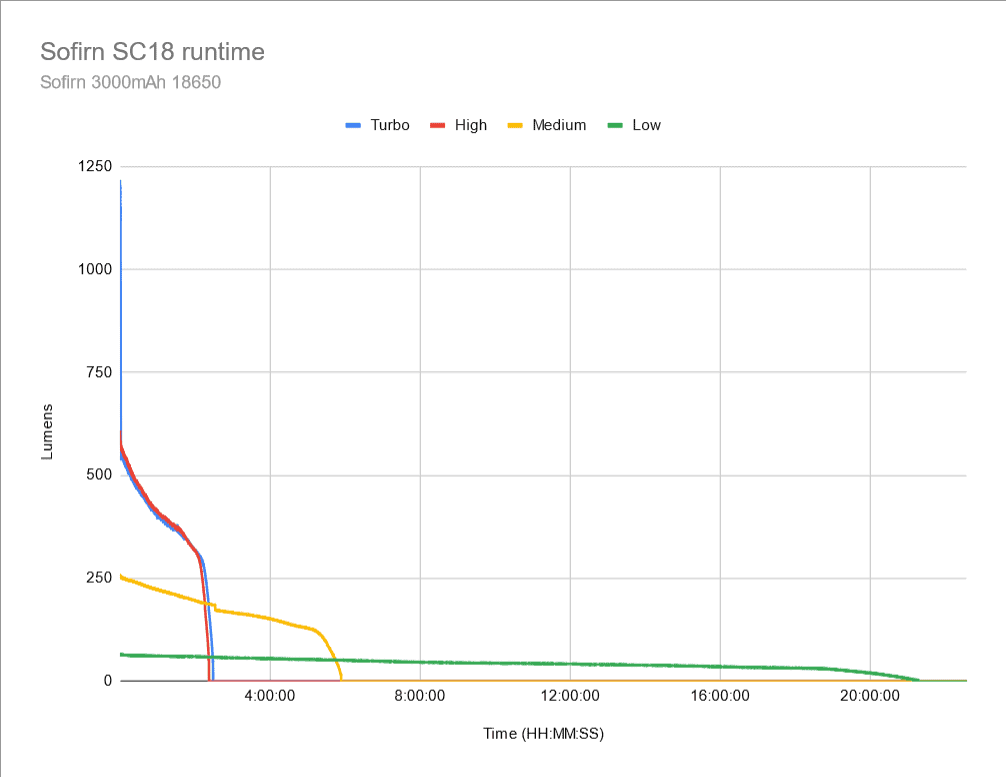
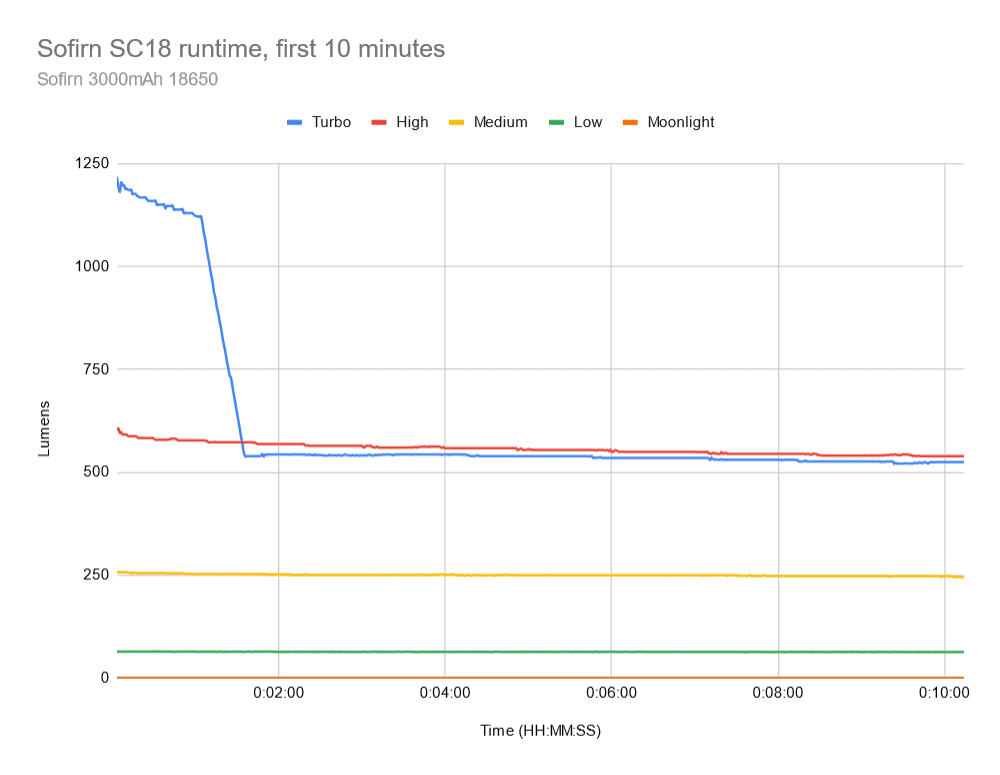
| Mode | Specified | Measured runtime (ANSI) | Time till shut off |
|---|---|---|---|
| Moon | 230h | – | – |
| Low | 23h | 21h 03min | 21h 17min |
| Med | 6h 18min | 5h 52min | 5h 53min |
| High | 2h 36min | 2h 22min | 2h 22min |
| Turbo | 2h 18min | 2h 25min | 2h 29min |
ANSI FL1 standards: The runtime is measured until the light drops to 10% of its initial output (30 seconds after turning on). This does not mean that the flashlight is not usable anymore. The last column shows how long the light actually works till it shuts off. If there is a + symbol, it means that the test was stopped at that particular point, but the light was actually still running. This happens on certain occasions, with certain drivers, firmware, or batteries.
Peak beam intensity and beam distance measurements
Interestingly enough, despite not coming close to the output numbers for lumens, the SC18 starts to blow away the candela specs starting from medium. The claimed 217 meters of throw is eclipsed by the measured 231 meters. It almost feels like Sofirn came up with their output numbers using a different optic.
The numbers for candela were obtained with a UNI-T UT383S luxmeter at 5 and 15 meters, then averaged.
| Mode | Specified | Candela measured | Meters | Yards |
|---|---|---|---|---|
| Moon | 30 | – | – | – |
| Low | 642 | 527 | 46 | 50 |
| Medium | 2358 | 2619 | 102 | 112 |
| High | 5592 | 6642 | 163 | 178 |
| Turbo | 11,750 | 13,338 cd | 231 | 253 |
Extra info: Peak beam distance according to ANSI FL1 standards: The calculated value of distance in meters at which the flashlight produces a light intensity of 0.25 lux. (0.25 lux is about the brightness of a full moon shining on an object). Columns Meters and Yards show rounded numbers.
Beamshots
These were taken with a Samsung Galaxy S22+ using pro mode and the following settings:
- WB 5000K
- ISO 200
- Speed 0.5
Beamshots of the following flashlights compared:
- Sofirn SC31T Pro
- Wuben TO40R
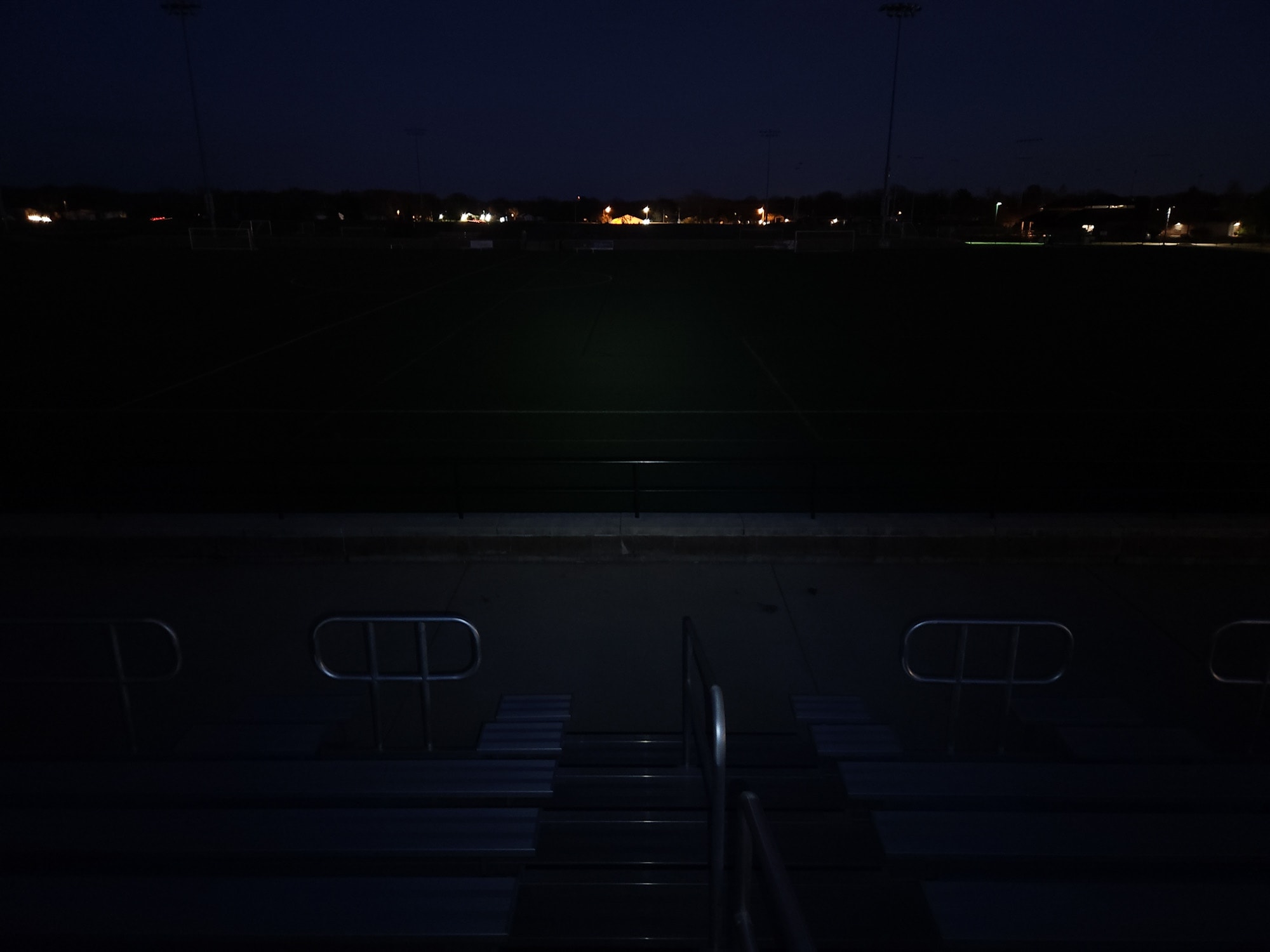
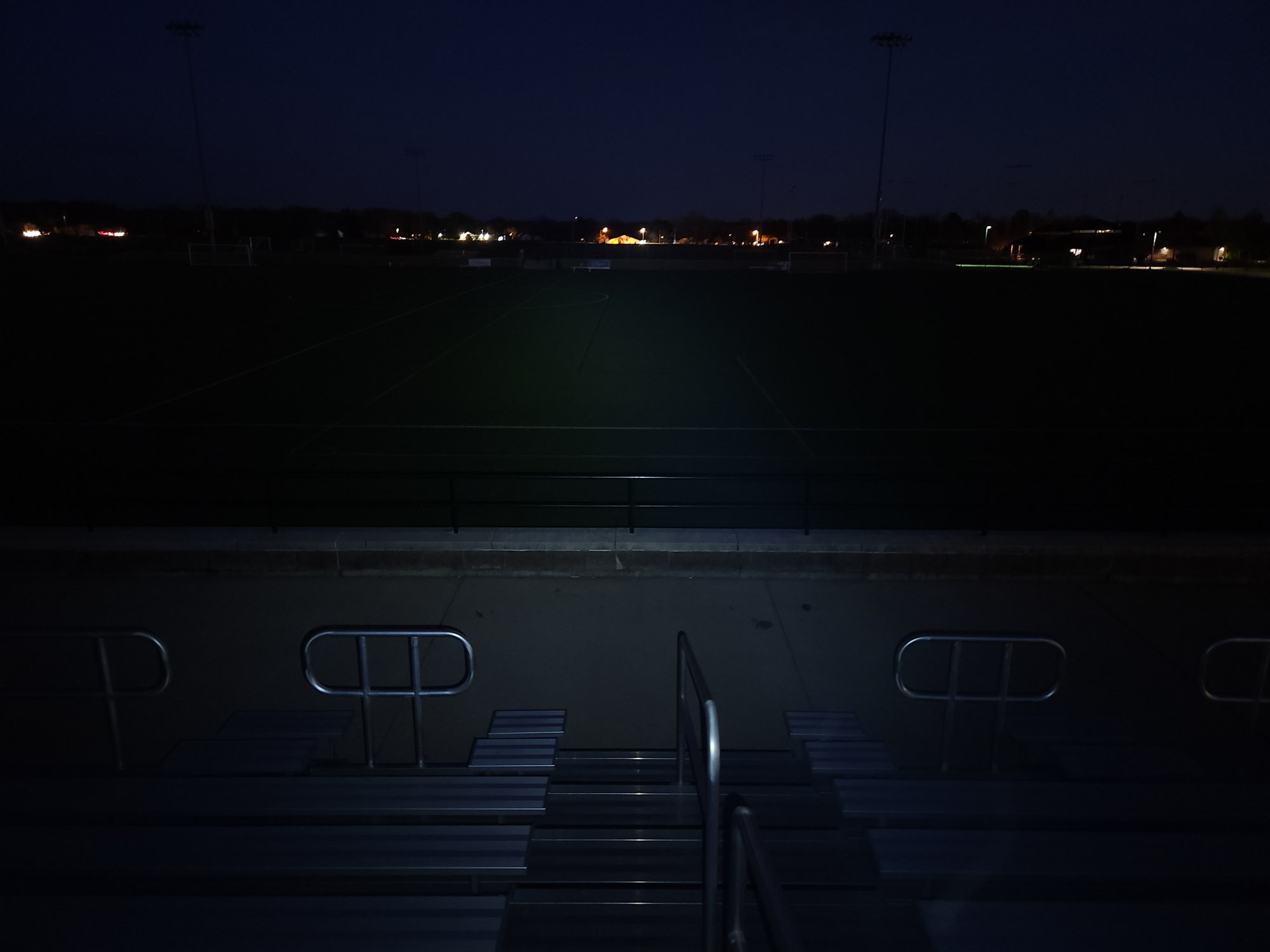
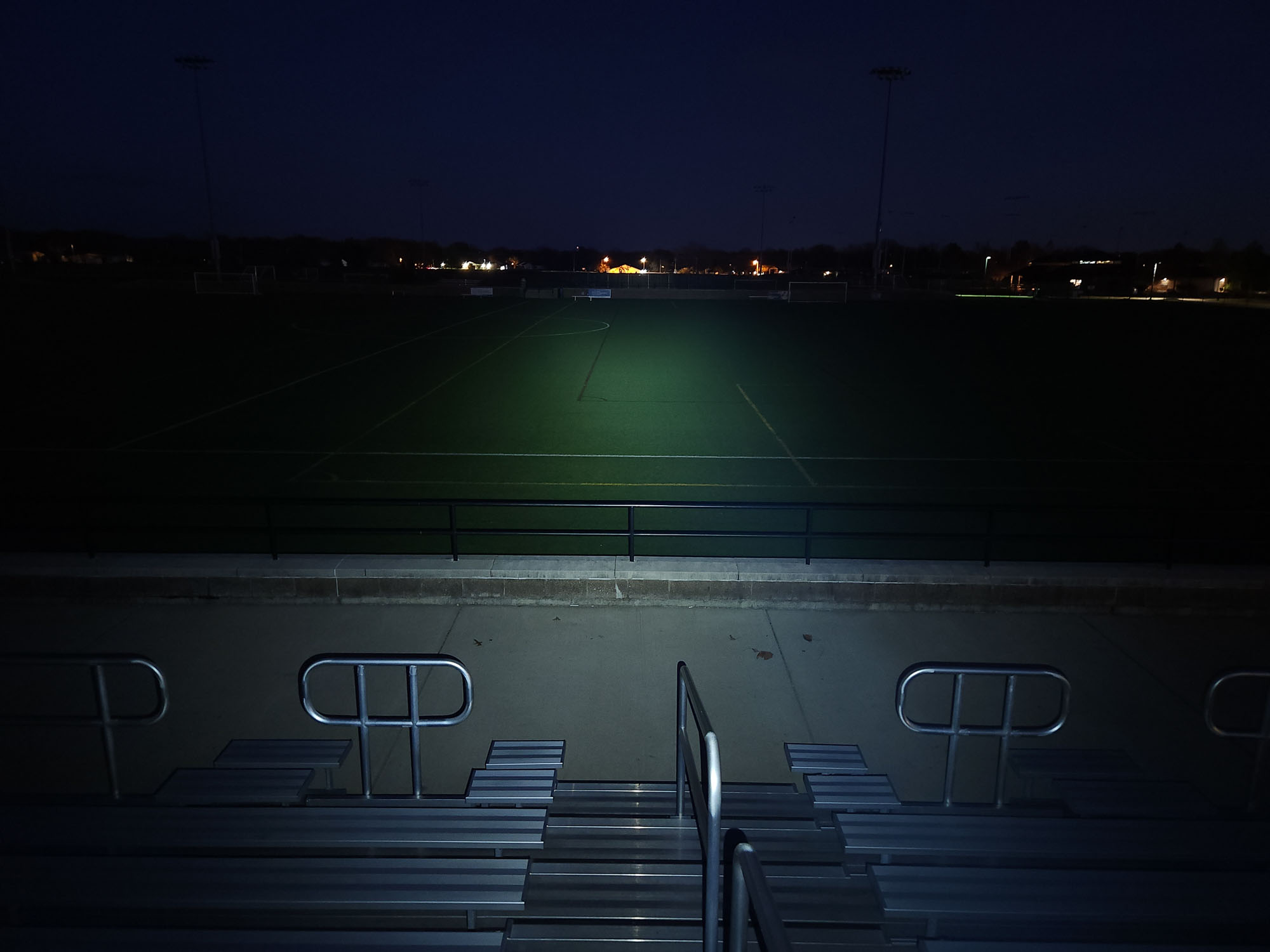
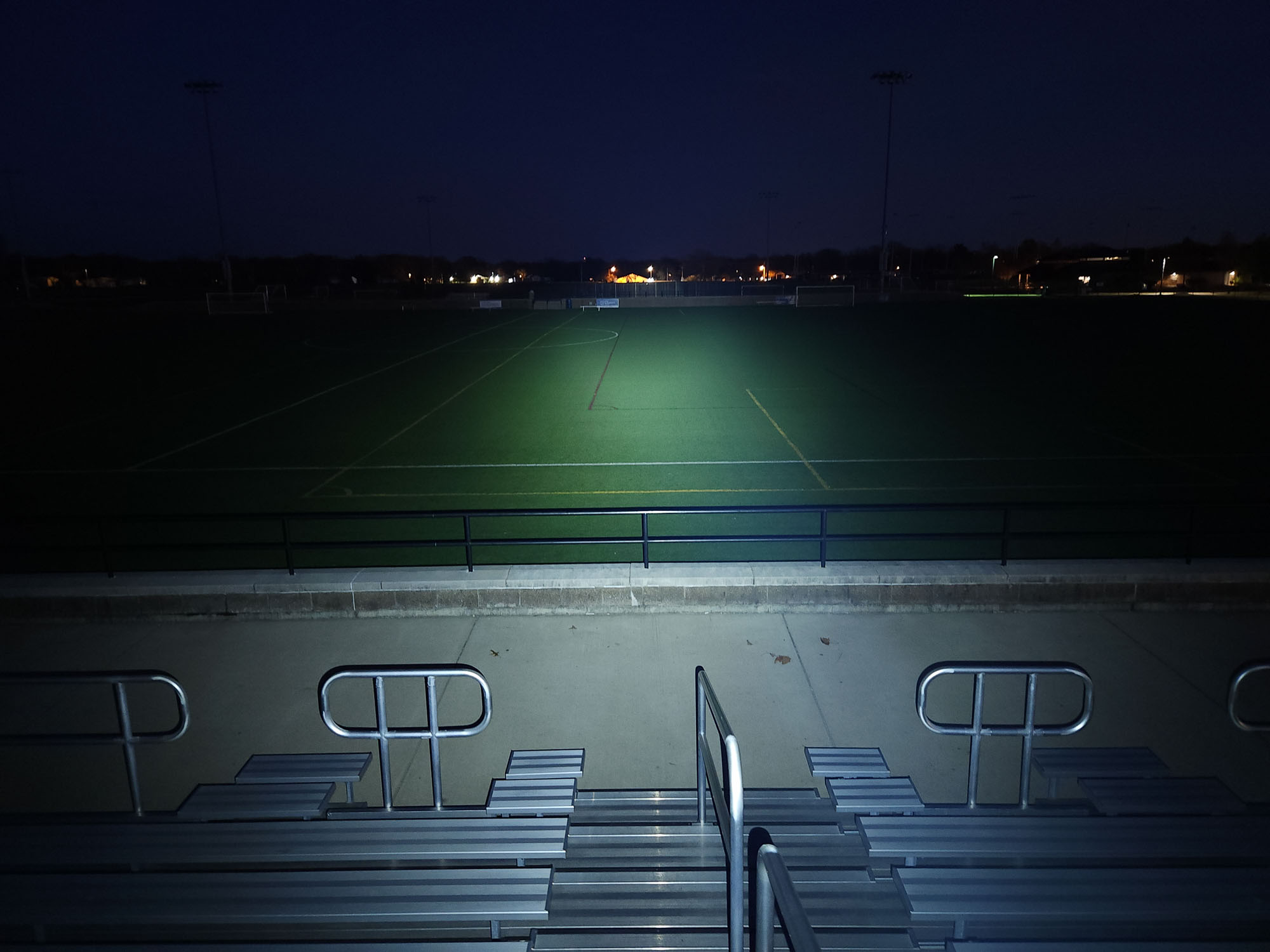

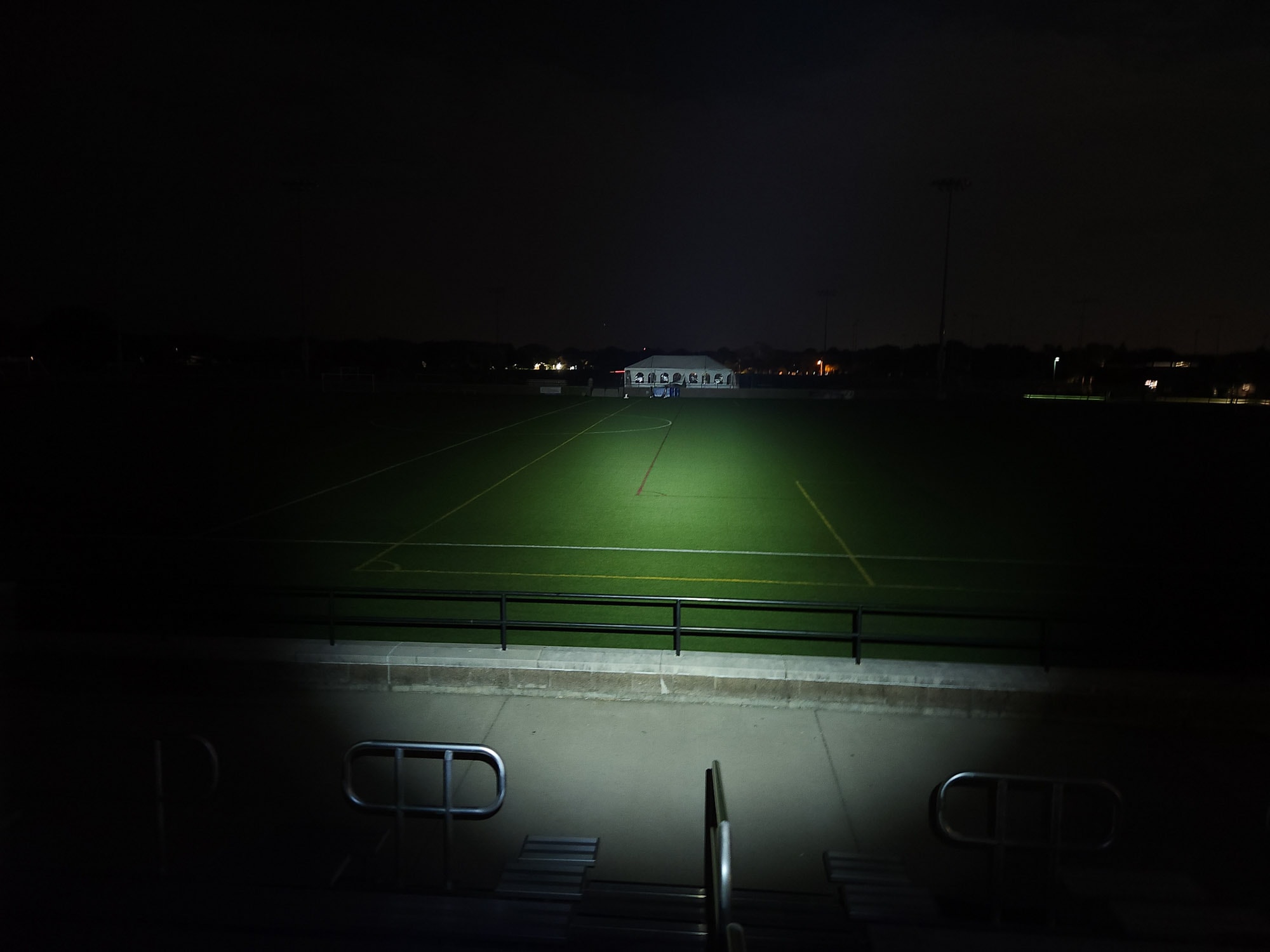
Disclaimer: This flashlight was sent to me for review at no cost by Sofirn . I have not been paid to review, nor have I been holding back on problems or defects.
Final Verdict
Pros
- Complete package with battery and integrated charging
- Simple interface, but still includes shortcuts to moonlight and turbo and momentary moonlight from lockout!
- Cannot beat the price
Cons
- Doesn’t live up to lumen specifications
- Horizontal-only knurling feels slippery
- Delay in activation after clicking the button
- Poor internal thermal conductivity probably limits performance
Explanation on star ratings:
1: Avoid: a match would be a better choice – 2: Poor: significant defect or issues; almost unusable – 3: Average: some defects or issues; but still usable 4: Good: recommended (minor issues) – 5: Great: highly recommended

4 stars: ★★★★
Sofirn is setting the price bar low with the SC18. At only $15 on their website or AliExpress without a battery, you get a fully featured 18650 light with integrated USB C charging! (Though you should definitely add the battery for an additional $2 because you can’t beat that price, either!) Once you put it under a microscope, though, you start to see where cuts were made to achieve that price savings: Using an SST-40; the delay in activation once the button is clicked; the gaps between hardware in the head; the lack of glass lens.
However, I think Sofirn accomplished what they set out to do. The SC18 is an inexpensive light, but it’s very usable. Personally, I think this would be a great gift light and for that, I give the SC18 4 stars.
Buy Sofirn SC18 here
1lumen selects and reviews products personally. We may earn affiliate commissions through our links, which help support our testing.